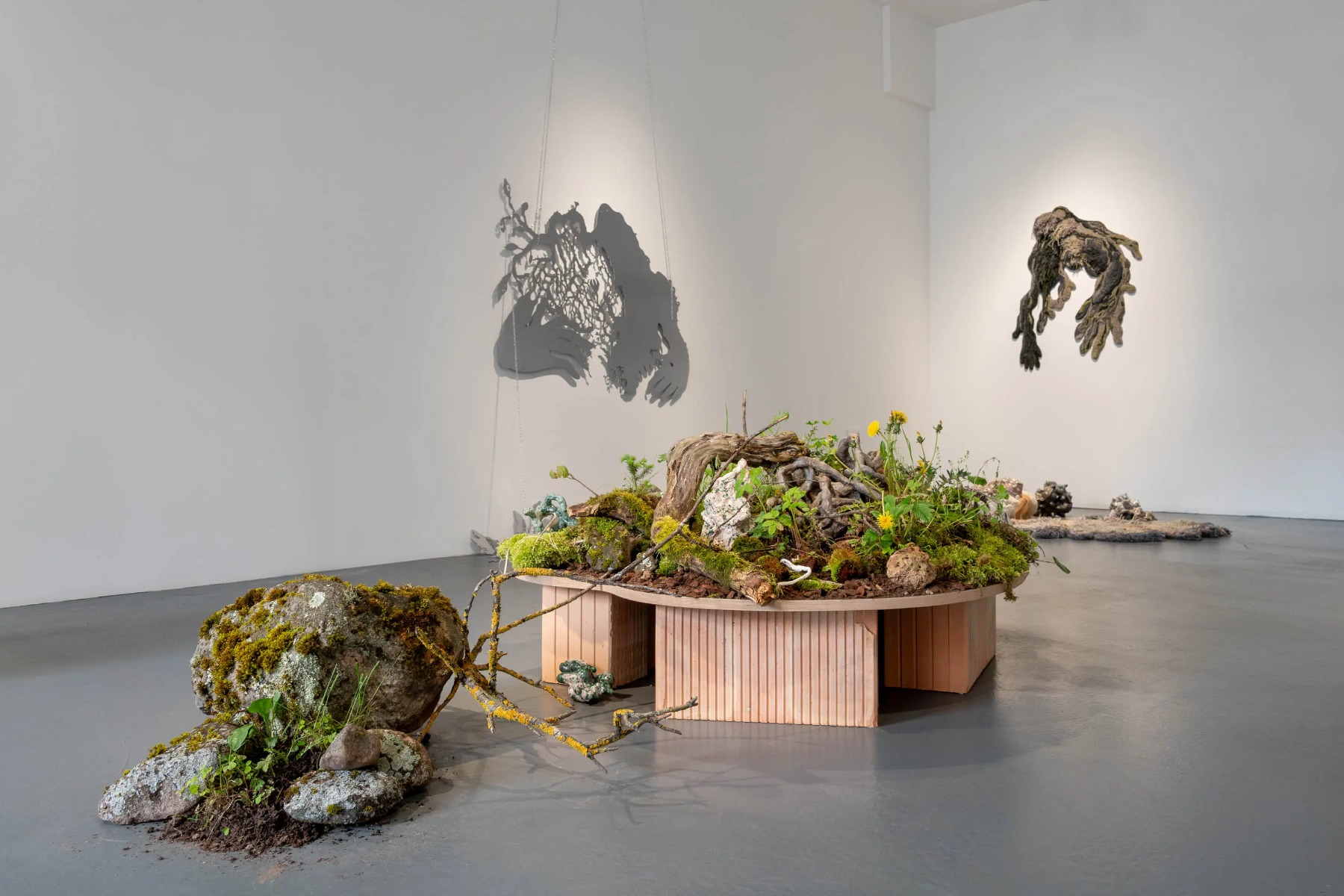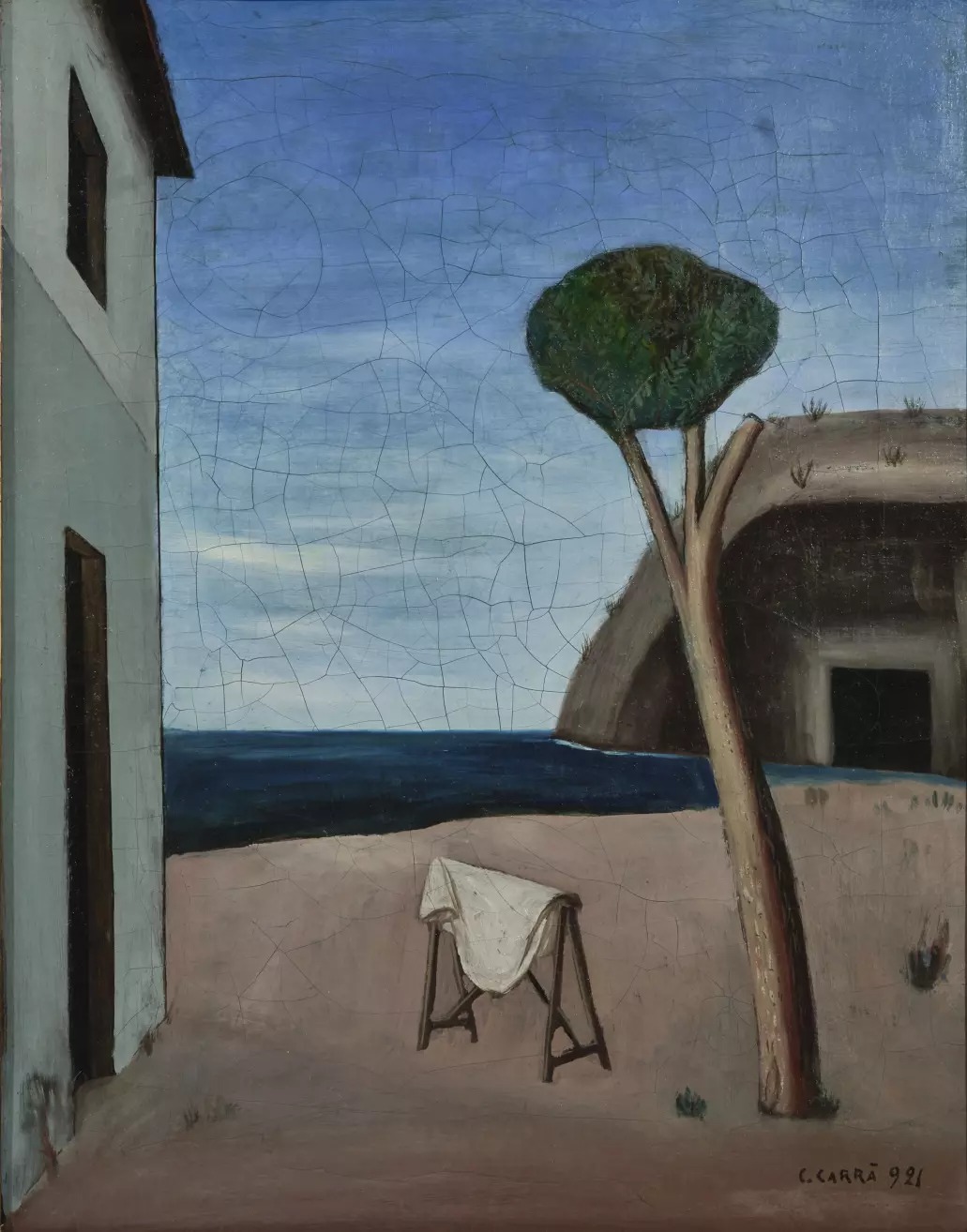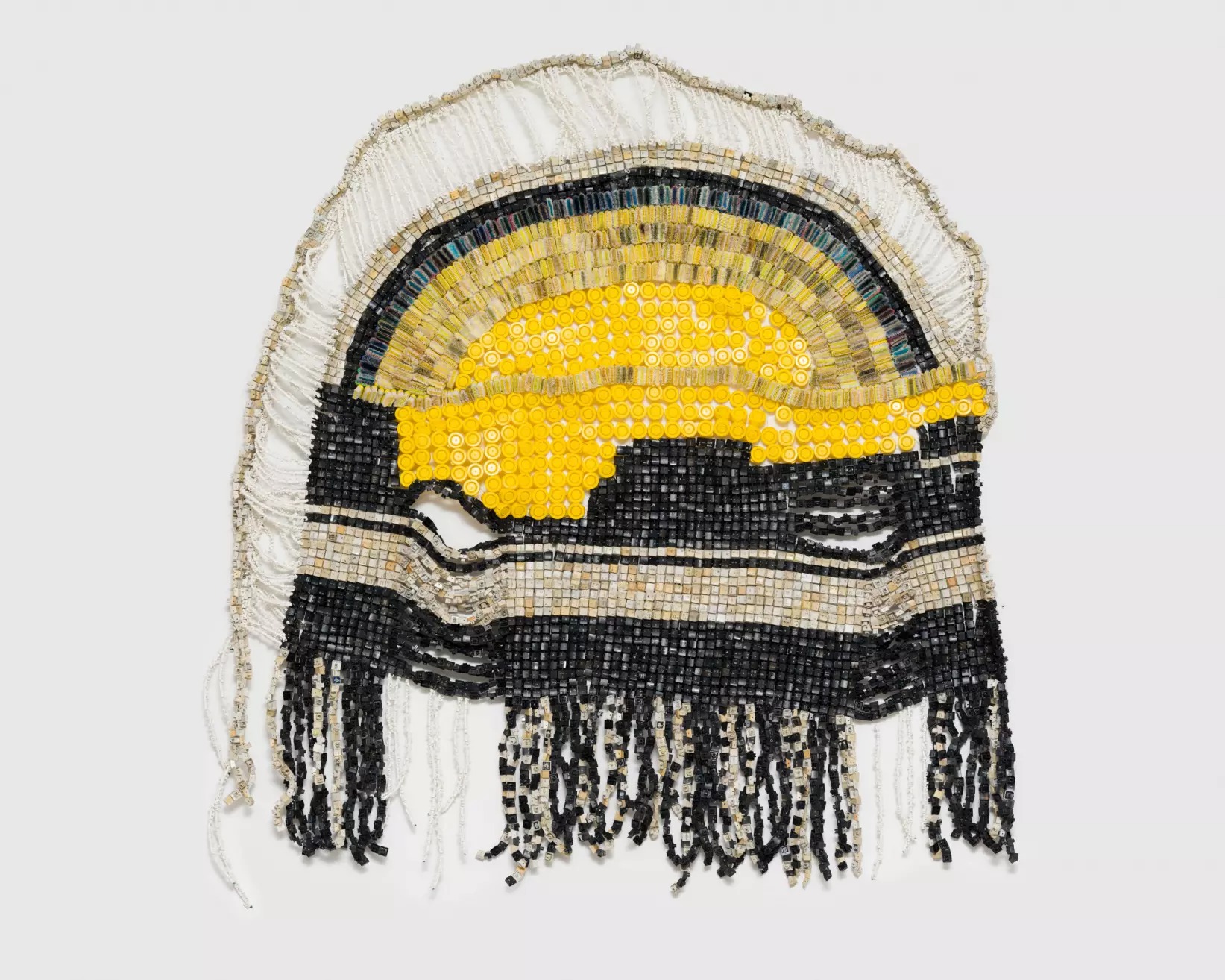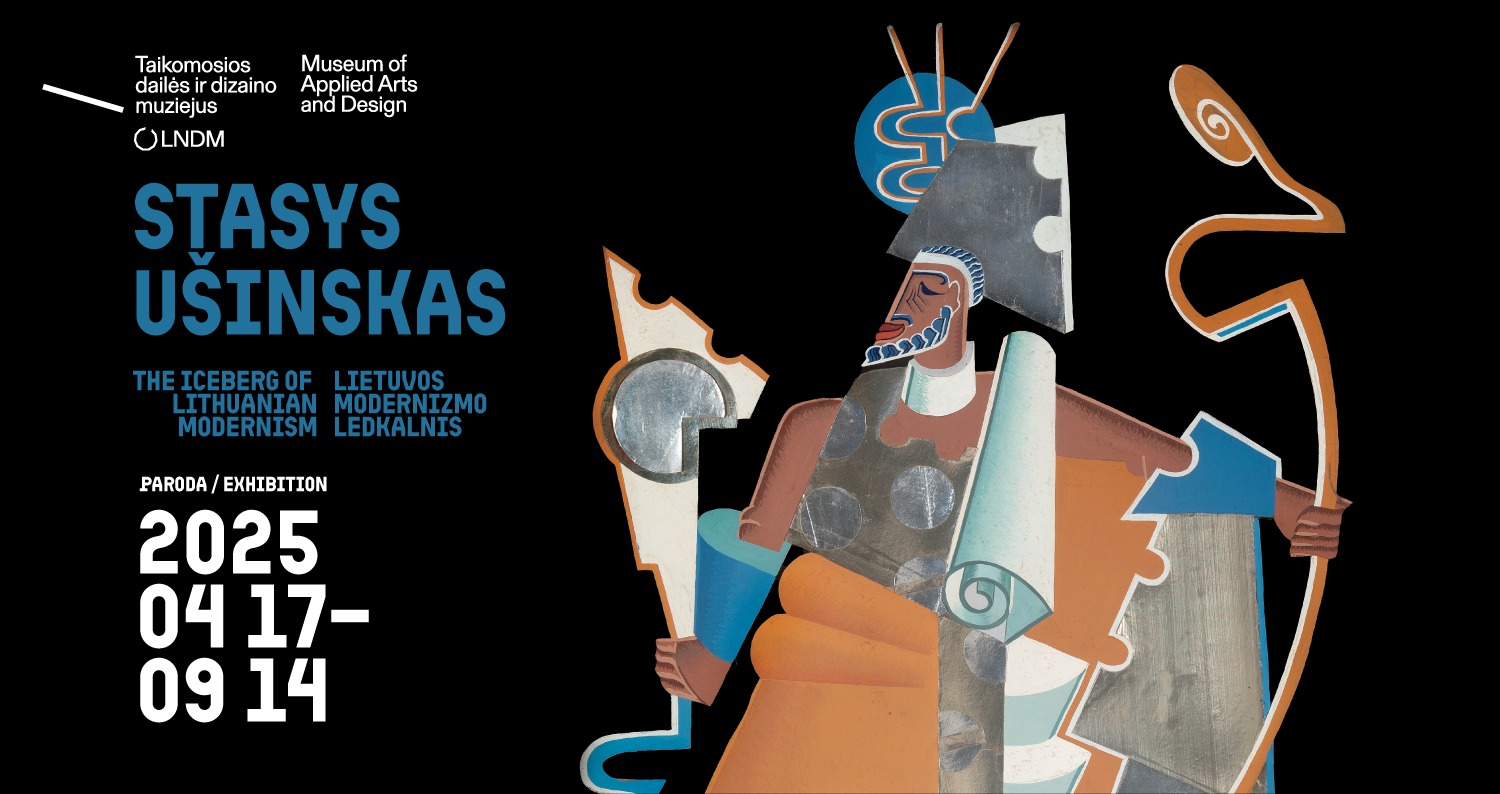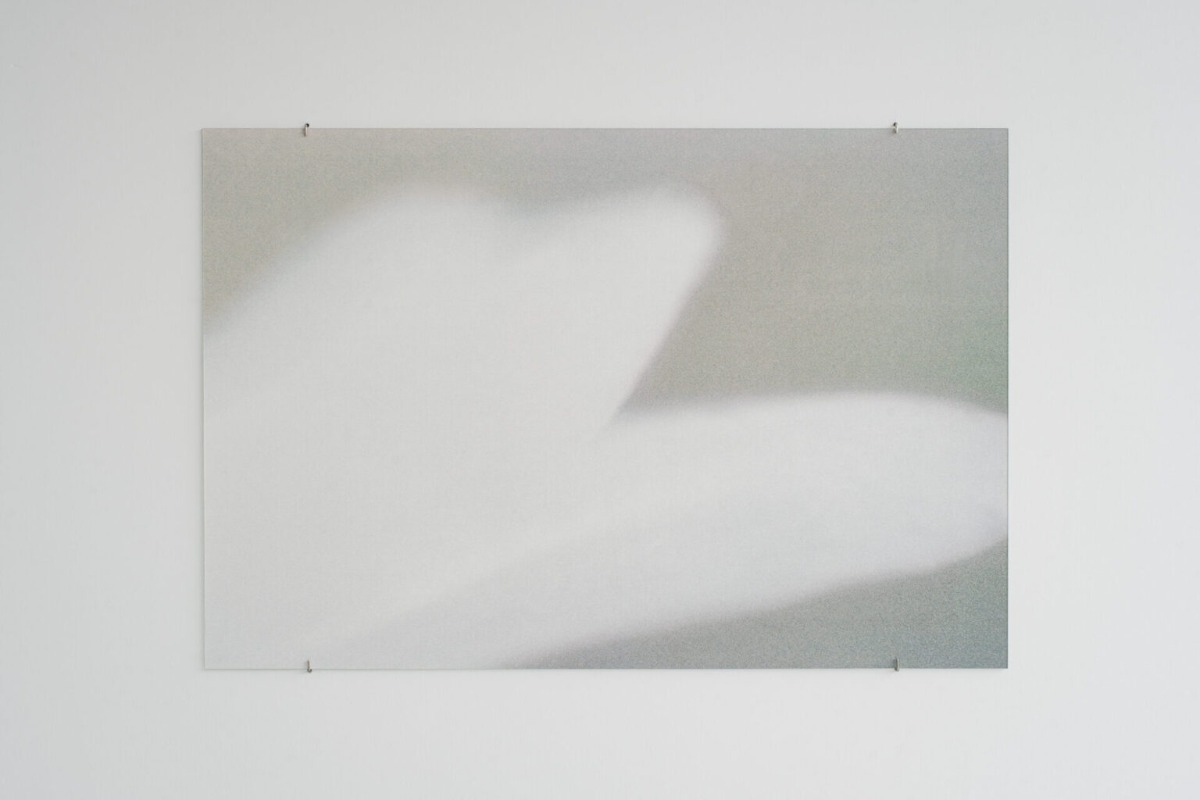
What to see in the Baltics
We’re once again publishing our selection of the most exciting exhibitions for the coming two months. As we prepare this overview, gallery teams are arriving in Riga not only from Tallinn and Vilnius, but also from Warsaw, to take part in the very first edition of the Riga Contemporary art fair. It’s wonderful that sometimes, when you don’t go to the galleries, the galleries come to you. But of course, what will be presented at Hanzas Perons is only a part of the vast landscape – the vibrant scene – shaped by artists, galleries and museums across the three Baltic countries. What we offer is something like a small path through it. Enjoy the walk!
ESTONIA, Tallinn
Tallinn Art Hall, Lasnamäe pavillion
Algirdas Jakas. Bending fingers, bending ribs. 2024. 19th Tallinn Print Triennial (2025). Photo by Laurynas Skeisgiela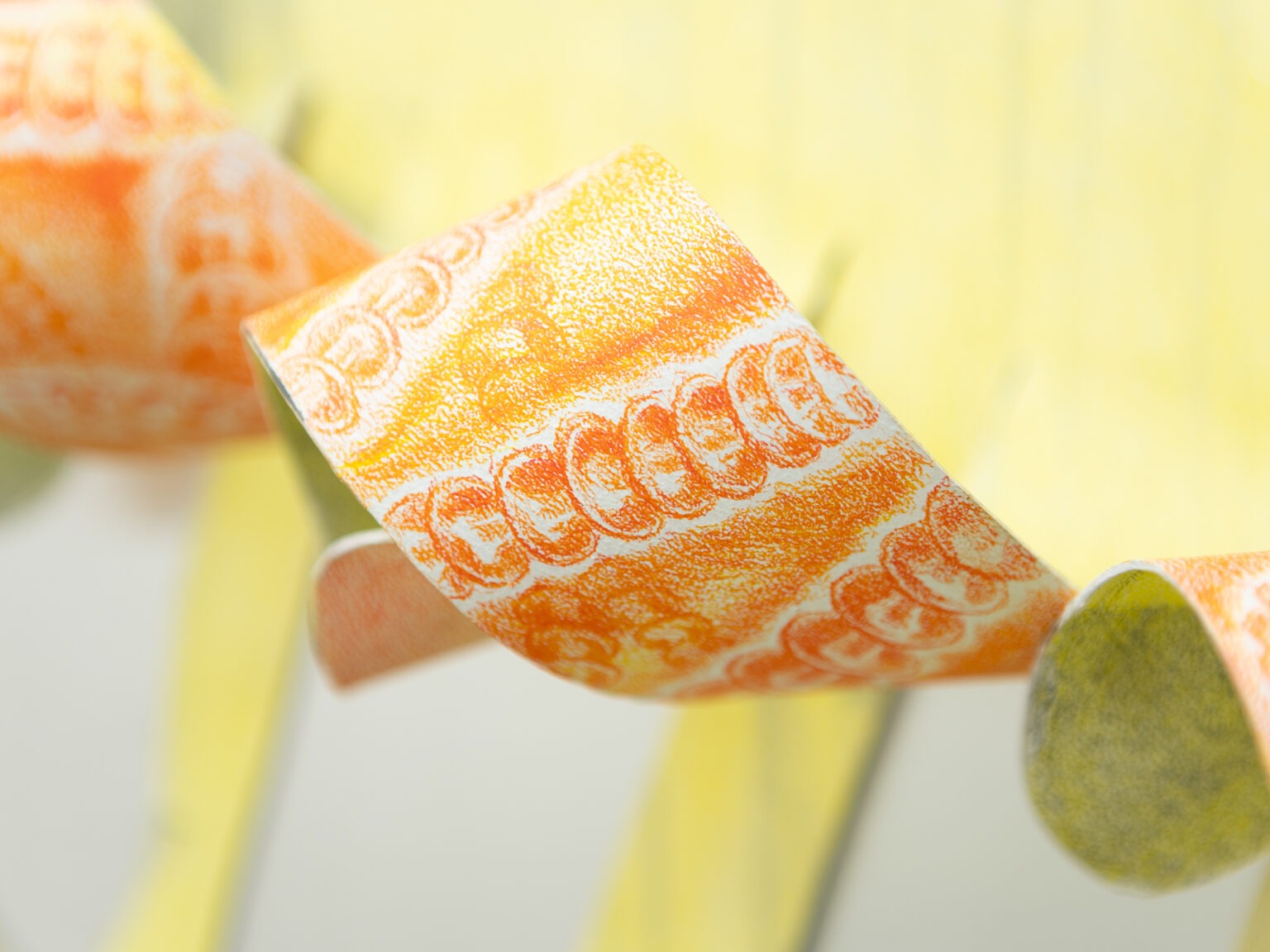
19th Tallinn Print Triennial
Until 31 August
The exhibition focuses on the art medium of printmaking through the lens of media archeology. This exhibition focuses on the culture of memory: the means through which information and knowledge are stored, marking different technological stages – from the impulse to leave a trace to the information glut and the resistance to produce it. The Triennial continues its traditional role as an innovator in the field of graphic arts, critically analysing developments in the visual arts and visual culture in the local art field.
Tallinn Print Triennial will culminate on 29 August 2025 at Lindakivi Cultural Centre with a closing event featuring experimental time-based works in sound, spoken word, and video art. Participating artists: Siim-Tanel Annus (EE), Zuza Banasińska (PL), Mirtha Dermisache (AR), John Grzinich (EE/US), Maria Erikson (EE), Doris Hallmägi (EE), Semjon Hanin (LV), Lauri Koppel (EE), Maija Kurševa (LV), Lauri Lest (EE), Maria Mayland (DE), Dzelde Mierkalne (LV), Anna Niskanen (FI), Algirdas Jakas (LT), Tõnis Jürgens (EE), Anne Rudanovski (EE), Ülo Sooster (EE), Anastasia Sosunova (LT), Viktor Timofeev (LV), Gintautas Trimakas (LT), Taavi Villak (EE).
Kumu Art Museum
Ragnar Kjartansson, Margarét Bjarnadóttir, and Bryce Dessner, No Tomorrow, 2022. Video installation. Courtesy of the artists, Luhring Augustine (New York) and the i8 Gallery (Reykjavík)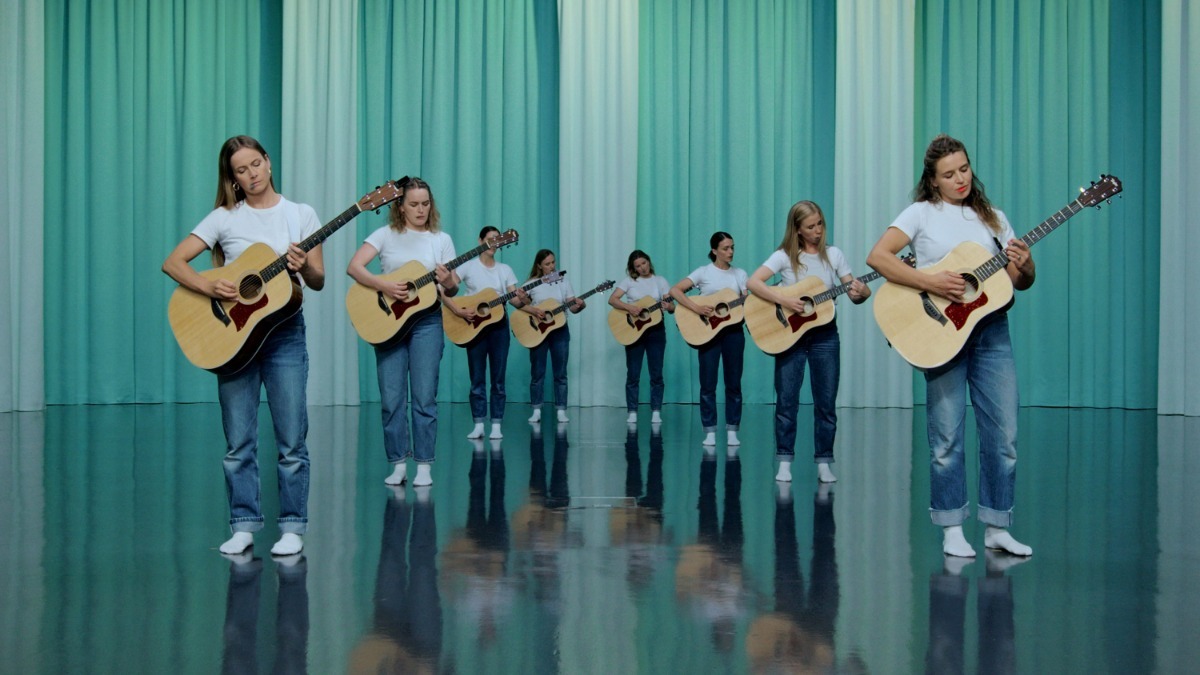
Ragnar Kjartansson. Boy and girl and bush and bird
Until 21 September
The first Estonian solo exhibition of the Icelandic video artist and painter Ragnar Kjartansson (b. 1976) consists of six large works from 2004–2025. A Boy and a Girl and a Bush and a Bird provides insight into the oeuvre of one of the most fascinating and idiosyncratic artists in the contemporary international art scene. His art has been influenced by pop music, recent and classic art history and, in a less straightforward way, by political upheavals. Although his works are highly conceptual, i.e. full of cultural connotations and quotes, Kjartansson’s oeuvre is truly affective, touching the viewer strongly and very intimately.

The Mei Sisters: Avant-Garde and the Everyday Life
Until 31 August
The sisters Kristine (1895–1969), Lydia (1896–1965) and Natalie (1900–1975) Mei, daughters of a mariner from the island of Hiiumaa, entered the Estonian art life in the second half of the 1910s. They included in their works themes and viewpoints that were unusual for female creators, rising into the ranks of the classic masters of Estonian modernism by using marginal and less appreciated techniques.
The exhibition contains drawings, watercolours, small sculptures and collages, as well as everyday items and unique handmade booklets authored under pseudonyms. The works reflect the times of the artistic sisters with immediacy and directness. Besides socio-critical attitudes, which were very unusual for female authors, we also find re-interpretations of canonical artworks. The works often have humorou s undertones. A wider context to the works by the Mei sisters is created by rich photo material and a look at their circle of friends. Dora Gordine, Peet Aren, Otto Krusten, Anton Starkopf, Karin Luts, Marita Walldén and Albin Kaasinen were among the sisters’ closest artistic friends at different times.
Mikkel Museum
Mihkel Maripuu. Monsters under My Bed. 2010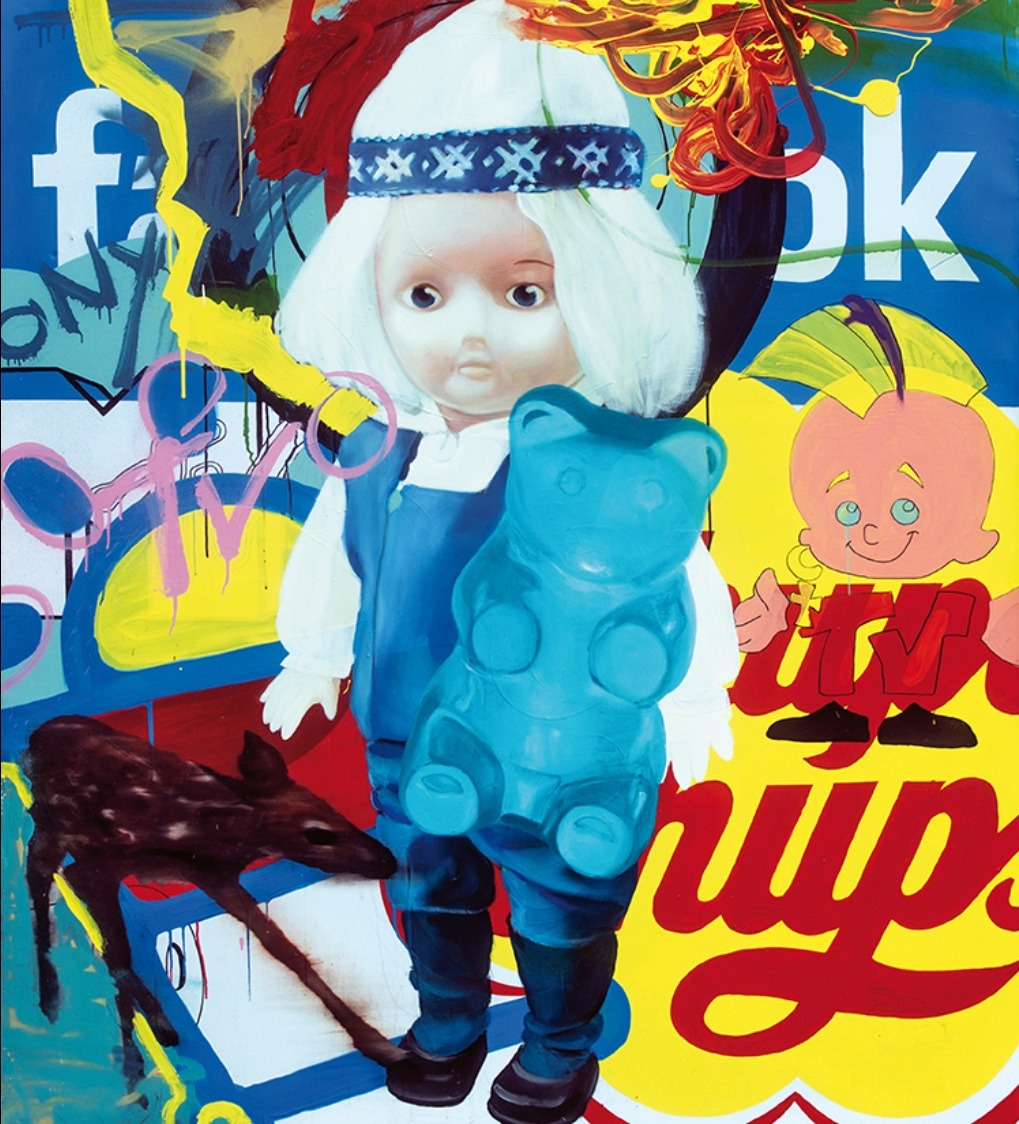
Art Addiction: Reigo Kuivjõgi’s Art Collection
Until 9 October
Reigo Kuivjõgi, a gallerist, art collector and populariser of contemporary art, is a well-known figure in the Estonian art scene. The exhibition offers an opportunity to explore the works of many Estonian artists, from established greats to the emerging talents of the youngest generation. For years, he has tirelessly organised auctions of works by young artists, arranged personal connections with artists and gone to great lengths to acquire paintings. Rather than being merely an “art addict”, he has carefully built an impressive collection.
The exhibition presents an interim review of a long process of collecting and offers the opportunity to explore the works of many Estonian artists, from established greats to the emerging talents of the youngest generation.
EKKM
Still frame from the video Together, We Become Clouds by Maud van den Beuken, 2025. Courtesy of the artist.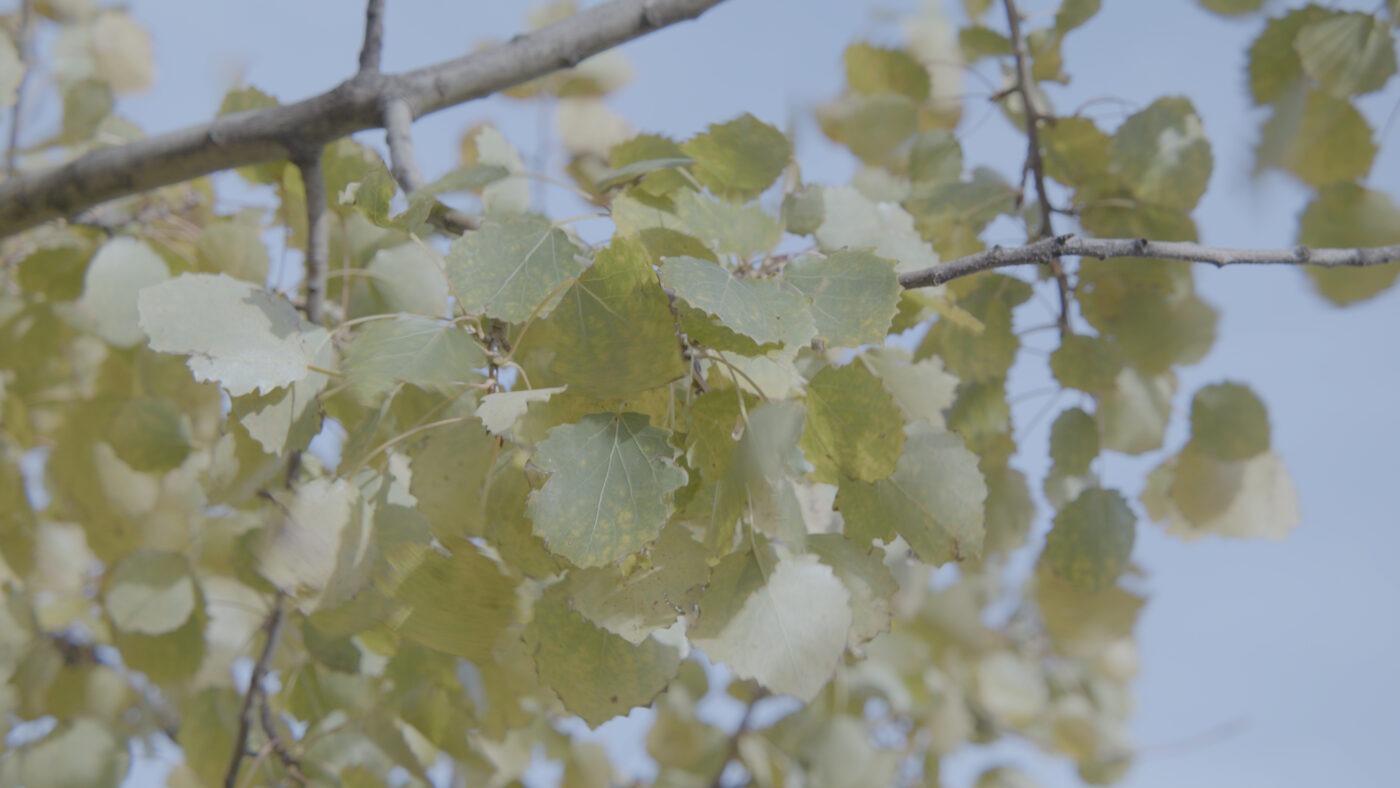
always is everywhere
Until 17 August
On 13 June 2025, the Contemporary Art Museum of Estonia (EKKM) opened the international group exhibition always is everywhere engaging with themes of universality and boundlessness of consciousness. The exhibition is curated by Margit Säde. always is everywhere is a meditative journey – a quiet reminder that consciousness is not tied to time, location, humans or other living organisms, but is the prerequisite of everything that exists. Participating artists: Angela Maasalu, Helena Keskküla, Jonas Mekas, Maud van den Beuken, Nele Kurvits, Reto Pulfer, Sirkku Rosi, Uku Sepsivart, Vaim Sarv, Yvette Bathgate & Jake Shepherd, Zorica Zafirovska.
The second project of EKKM’s 2025 season is a poetic attempt to perceive presence in everything and to celebrate it in all its totality. The curator Margit Säde writes in the accompanying text of the exhibition: “A plant does not think, yet it veers towards the light. A stone does not dream, yet it holds the warmth of the day. A cat’s purr is a sincere sign of a zest for life. Universal consciousness is everywhere and it is never-ending. That which exists always, can only be boundless“ The ten artists and one creative duo included in the exhibition invite us to look beyond species boundaries and to acknowledge the present moment from a more diverse perspective than that of the human eye. The exhibition will end with a two-day symposium on 16 and 17 August, inviting ecologists, poets and artists to reflect on the exhibition themes.
Fotografiska
Elliott Erwitt. Provence, France, 1955 © Elliott Erwitt / Magnum Photos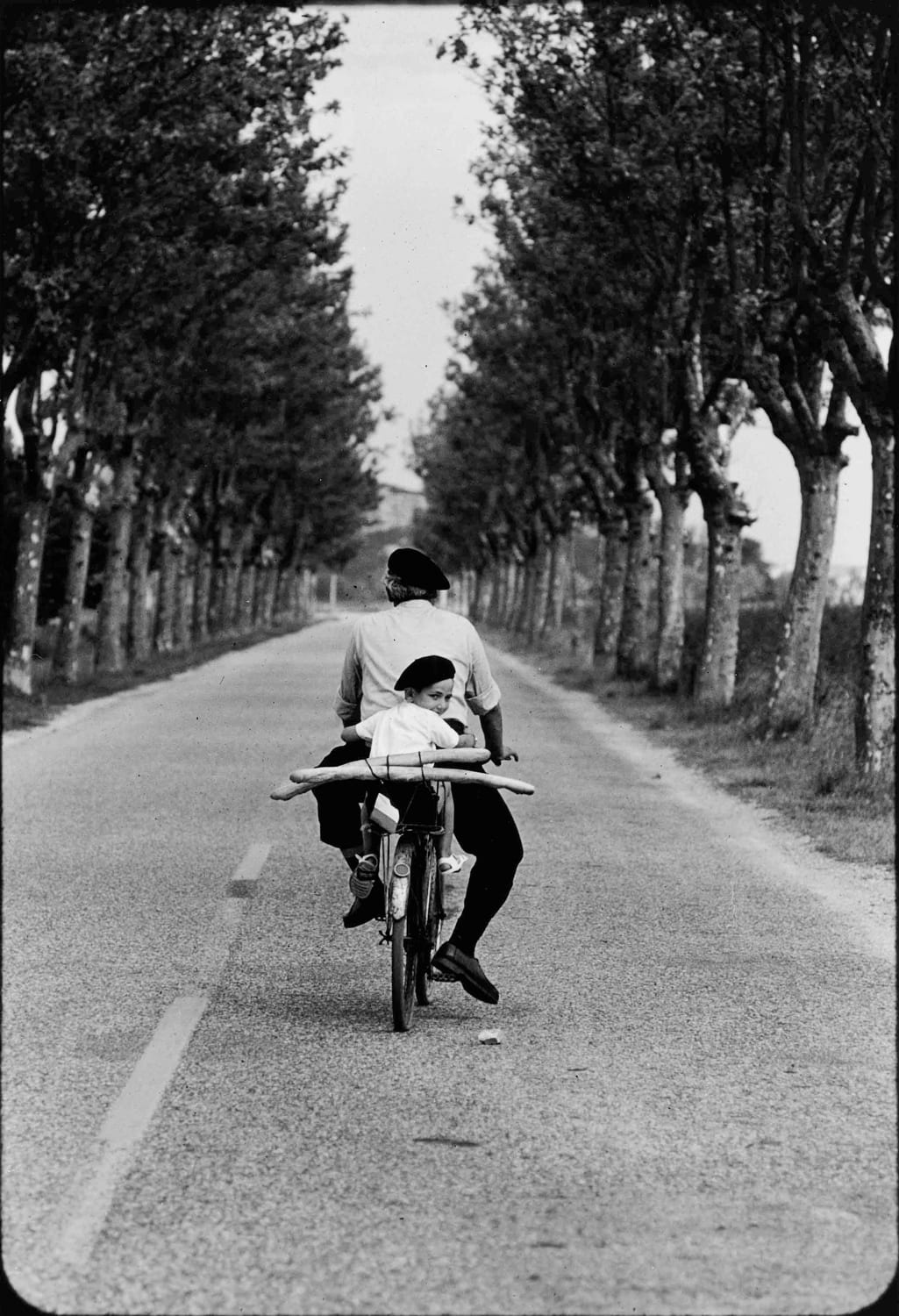
Through the Playful Eyes of Elliott Erwitt
Until 31 August
Fotografiska Tallinn presents Through Elliott Erwitt’s Playful Eyes, a retrospective exhibition celebrating the legendary photographer Elliott Erwitt (1928–2023). This exhibition explores Erwitt’s seven decades of creative photography, highlighting playful everyday moments, humorous perspectives, and thought-provoking reflections. It is Fotografiska’s tribute to the extraordinary journey and talent of the legendary artist, showcasing nearly 100 images that represent the pinnacle of street photography.
Erwitt had a rare ability to be in the right place at the right time, and his visual language is marked by a subtle wit that captures the warmth, playfulness, and emotional richness of everyday life. The exhibition features his iconic black-and-white photographs alongside lesser-known works, including some of his earliest images from 1949 and a selection of color photographs from his later creative period.
Temnikova & Kasela Gallery
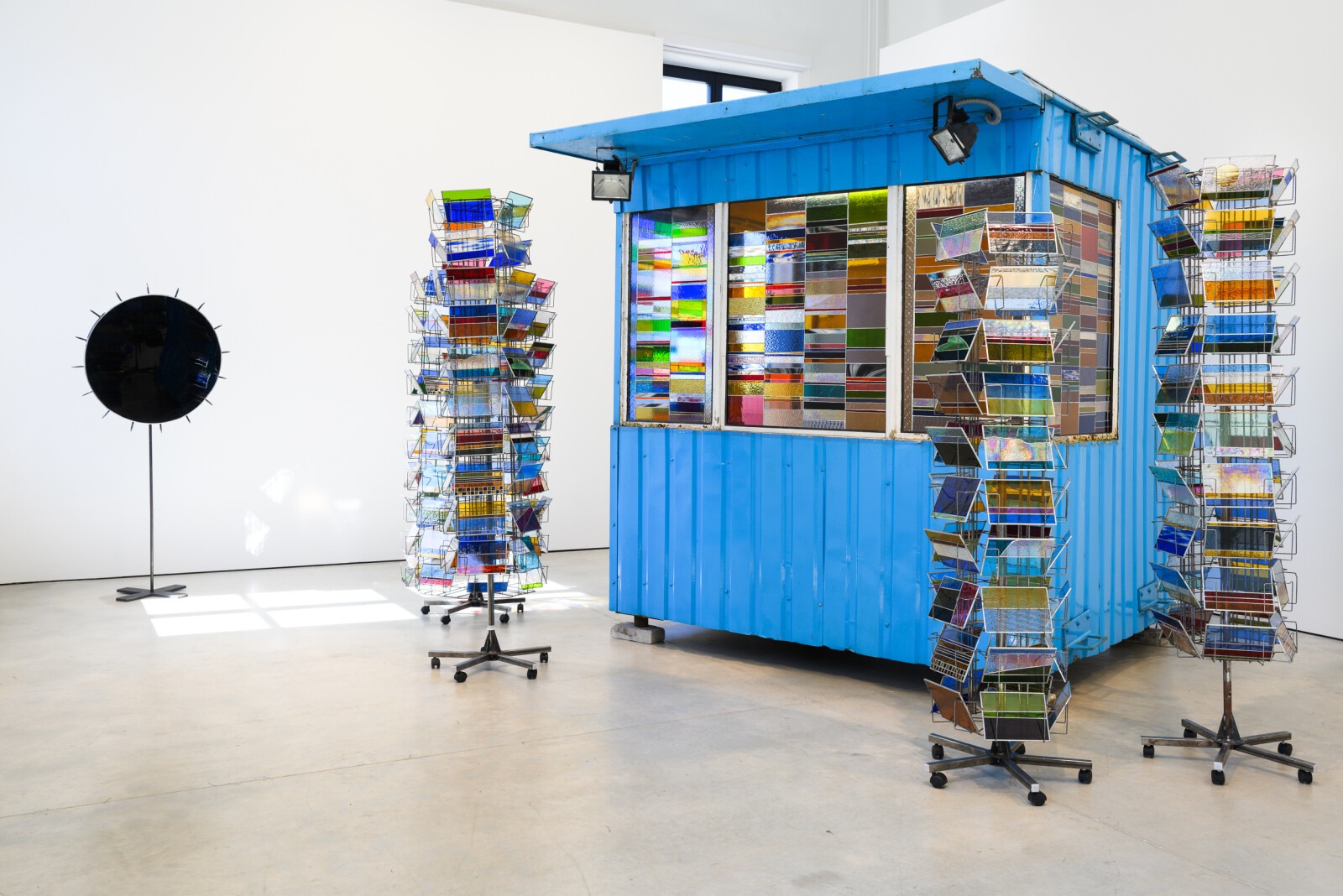
Daria Koltsova 'The Kiosk' as part of UKUfest (Ukrainian Art Festival)
Until 10 August
Daria Koltsova (1987) is an Ukrainian artist based in Paris. Koltsova graduated from Academy of Design and Art in Kharkiv and worked in Kyiv until the full-scale invasion of Ukraine in 2022. That’s what she writes on her exhibition: ‘“The Kiosk” is my new stained glass installation. Kiosk’s life fades in the past and become a layer of our immaterial memorabilia. I bring this architectural object from outside space into the gallery space, a scene from a dystopian reality lost in space and time. Kiosks used to form an eclectic meeting and trading space of the common people - places to buy snacks, drinks or newspapers, to exchange news, account for the latest rumours; an easy going moment to socialize. Kiosks as a subculture, but also as architectural objects transformed into almost contemporary art pieces, countless interrelated objects are woven together into a colourful mess, in which one can hardly notice the salesperson who drowns in his supplies…
3 metal and glass sculptures in a shape of sunflowers are disposed around. They are called “Witnesses”. Together with the kiosk and postcard stands they all create a dystopian poetic space in which these totemic representations transform the room into an archive of memories, feelings and reflections.”
Estonian Museum of Applied Art and Design
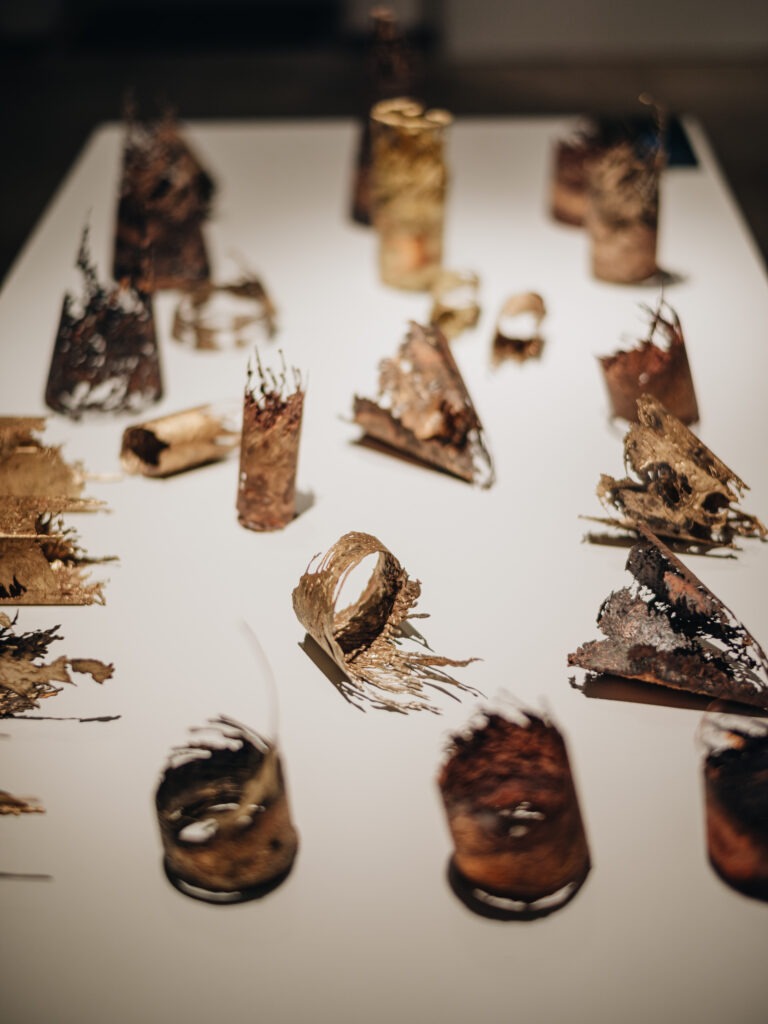
Between Borders, Between Materials
Until 21 September
Art spheres have lost their clearly defined material boundaries. Instead of artists who see only one or another material as their domain, we are increasingly seeing artists who move freely between disciplines and materials. They naturally use various approaches, living amidst a hybrid diversity that they experience as a whole. Sometimes their method resembles a micro-language, spoken by only a few. The exhibition reveals a richness that transcends materials. It brings together 44 artists whose relationship with material is surprising – at times even extreme.
Alongside the works of current and possibly near-future trendsetting artists, the exhibition also presents pieces from the 1970s and 1980s that seem to speak the same language as the newer works. The selected pieces allow the distinct character of materials to come to the forefront. The objects are only conditionally functional – while one might use them as a brooch, vase, or knife, their primary purpose is to offer the experience of encountering art.
Seek gallery, Museum of Photography
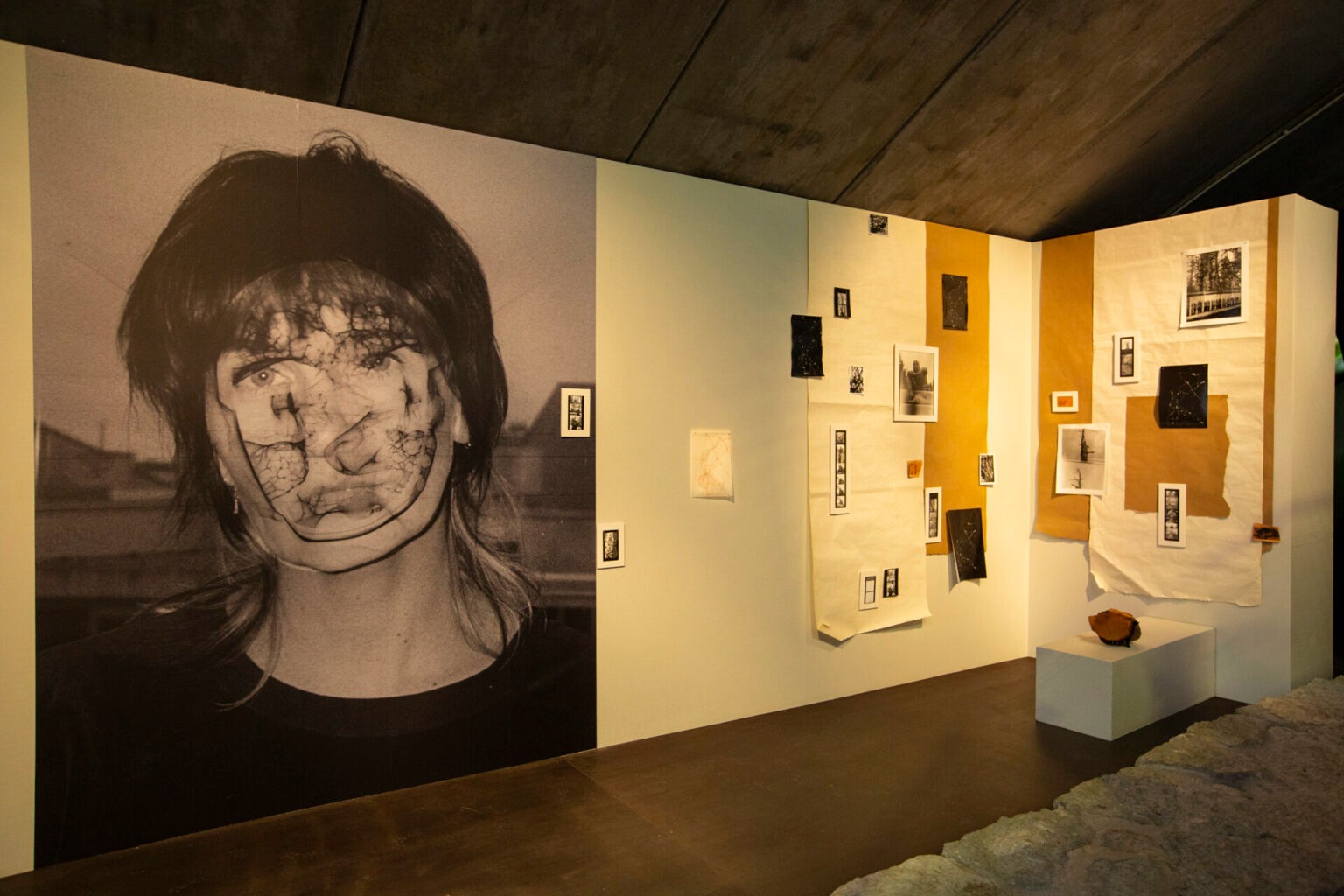
Alyona Movko-Mägi. Soo
Until September, 27
Alyona Movko-Mägi’s exhibition Soo examines the bog as both landscape and methodology — a thinking entity that absorbs, preserves, and transforms. Living beside the wetlands of Lahemaa, the artist has developed a practice that follows the bog’s own logic: layered, patient, resistant to simple interpretation. The exhibition brings together sculptural objects, photographic processes, interactive environments, and digital translations that reflect on how matter records presence and absence. Working across organic and synthetic materials — vegetable-tanned leather, bone, glass, analog photography, AI-generated forms, and digitally fabricated structures — each work begins from lived engagement with specific places: leather forms shaped around forest roots that remember pressure without carrying bodies, textile sculptures slowly reclaimed by moss and weather, bones found on forest floors and marked with silver leaf. Central to the practice is an investigation of care — what it means to attend to a place, its histories, its ongoing transformations. Some works unfold through slow material processes: boiling leather until it holds the memory of touch, casting glass that sags under heat, contact printing where light passes directly through materials onto photosensitive paper.
The exhibition inaugurates the new season in Estonia’s one-of-a-kind Night Gallery format. During the summer months, the gallery is open Wednesday to Saturday during late evening and nighttime hours: from June to August, 20:00–02:00; in September, 20:00–00:00.
ESTONIA, Tartu
Kogo gallery
Eike Eplik. In Times When Everything Else Seems More Important
Until 9 August
In times when ongoing wars and a growing political thirst for ultimate power hidden behind slogans of order have introduced a permanent state of instability, indulging in a search for one’s own inner child might seem senseless and even irresponsible. Anarchism, chaos, escapism – all these words ring the bells of doom in the feverish minds of adults trying to keep their fragile lives in order while the rest of the world is on fire. Hundreds of daily chores that keep the productivity numbers up give a sense of control and the idea that important things are being done and the purpose of one’s existence as a dutiful human being is fulfilled. But, to use the words of American writer Ursula Le Guin, one can say that people who deny the existence of dragons are often eaten by dragons.
As somebody who sees the entrapment in this vicious coping mechanism as a one-way ticket to burnout, artist Eike Eplik disobeys and surrenders to creative chaos, offering her new exhibition as the platform for an intuitive, even visceral exploration of oneself. Eplik’s solo exhibition is a playground for exhausted grown-ups who have forgotten the transformative effects and freedoms that a childlike openness and curiosity can present. Through playful rediscovery of her natural and youthful self, she questions the limitations and lack of imagination that the world of reason presents.
LATVIA, Riga
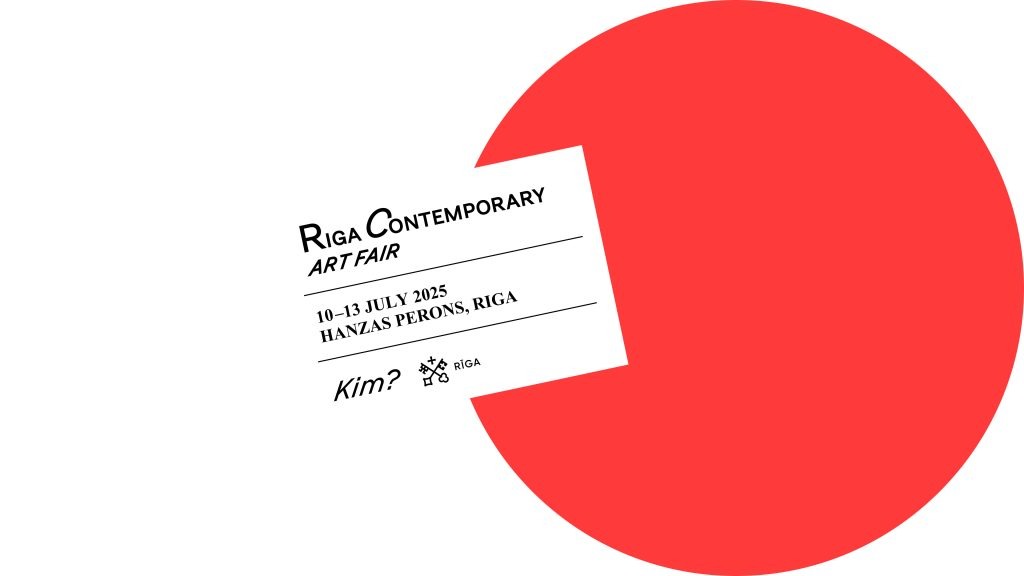
Riga Contemporary art fair
10-13 July
Founded by Kim? Contemporary Art Centre, Riga Contemporary art fair will feature presentations from more than 35 international galleries. Set within Hanzas Perons, a historic railway warehouse now transformed into a striking cultural venue, the event will provide a platform for contemporary art, showcasing both emerging and established artists and institutions from the region and around the globe. The invitation-only fair will feature galleries from the Baltics, the Nordic countries, the USA, Japan and beyond, presenting a diverse and global perspective on the regional contemporary art landscape.
As part of Riga Contemporary, a programme of talks and performances will bring together artists, representatives from international galleries, art advisors, Baltic collectors, and other creative industry professionals, fostering meaningful discussions and engagement within the contemporary art scene. The event takes place in close dialogue with international industry professionals, including Jeffrey Rosen, co-president of NADA (New Art Dealers Alliance) and director of the Misako Rosen gallery in Tokyo.
Latvian National Museum of Art
Carlo Carrà. A Pine by the Sea. 1921. Oil on canvas. Collection of the Pitti Palace Gallery of Modern Art, Florence, Italy. Publicity photo
Light from Italy: From Fattori to Morandi
Until 30 November
For the first time in Northen Europe, a substantial collection from the Uffizi Galleries (Le Gallerie degli Uffizi) in Florence is exhibited – 74 masterpieces from the permanent exhibition and holdings of the Pitti Palace (Palazzo Pitti) Gallery of Modern Art. This selection reflects the main movements and directions of Italian art, from the Macchiaioli group to Divisionism, from Symbolism to forms of Italian Expressionism, from Futurism to Modern Classicism. The story of Italian art from the unification of Italy in 1861 to the interwar period of the 20th century is complemented by historical parallels with significant events in Latvia and a dialogue with highlights from the collection of the Latvian National Museum of Art (LNMA).
The works of Italian artists are displayed in the exhibition in conversation with late 19th century and Classical Modernist heritage from Latvia, which art experts in Latvia and around the world consider to be among the most internationally recognized aspects of Latvian cultural patrimony. This approach supports a deeper narrative of the shared cultural ties and interactions between the two countries and across Europe as a whole. The title of the exhibition, Light from Italy, reflects a trend from the mid- and late 19th century – light became the principal element in the worldview of several artistic movements. It is no coincidence that the end of the 19th century is called visual art’s “years of light”, when fundamental changes took place in the aim, content and form of art. Artists in both Italy and Latvia were captivated by solutions for using light or its lack to tell a story and create a special mood.
Moffat Takadiwa (Zimbabwe). Zuva / Sun. 2024. Toothbrushes, computer keys, bottle caps, nail cable clips. Courtesy of the artist and Nicodim Gallery. Photo: Yubo Dong / Ofstudio Photography
Tukku Magi: Rhythm’s
13 May – 7 September
The exhibition Tukku Magi: Rhythm’s is a celebration of shared human experience, expressed through the universal language of art. It demonstrates how different styles, influences, and cultural perspectives can come together to create a multifaceted view that resonates with people on a deep, emotional level. Rhythm embodies the essence of artistic collaboration and the beauty that emerges when diverse voices are brought into conversation. It is not just music or dance movement, but also the rhythm of life, nature, and relationships between people. The world is in motion, creating rhythmic dialogues between the local and global, personal and public, authentic and constructed, humans and nature, between prejudice and openness to diversity.
Every artist in the exhibition contributes their individual story connecting with Africa and their own unique conception of rhythm. The display includes objects of African traditional art from the Tukku Magi collection, in conversation with contemporary artists, including Moffat Takadiwa (Zimbabwe), Dickens Otieno (Kenya), Jānis Jākobsons (USA / Latvia), Zoya Frolova (USA / Latvia), Nick Brandt (UK), Fernando Anuang’a (Kenya), and artist group James Muriuki (Kenya), Olga Kisseleva (France), James Mweu (Kenya), Margaret Ngigi (Kenya).
Zuzeum Art Centre
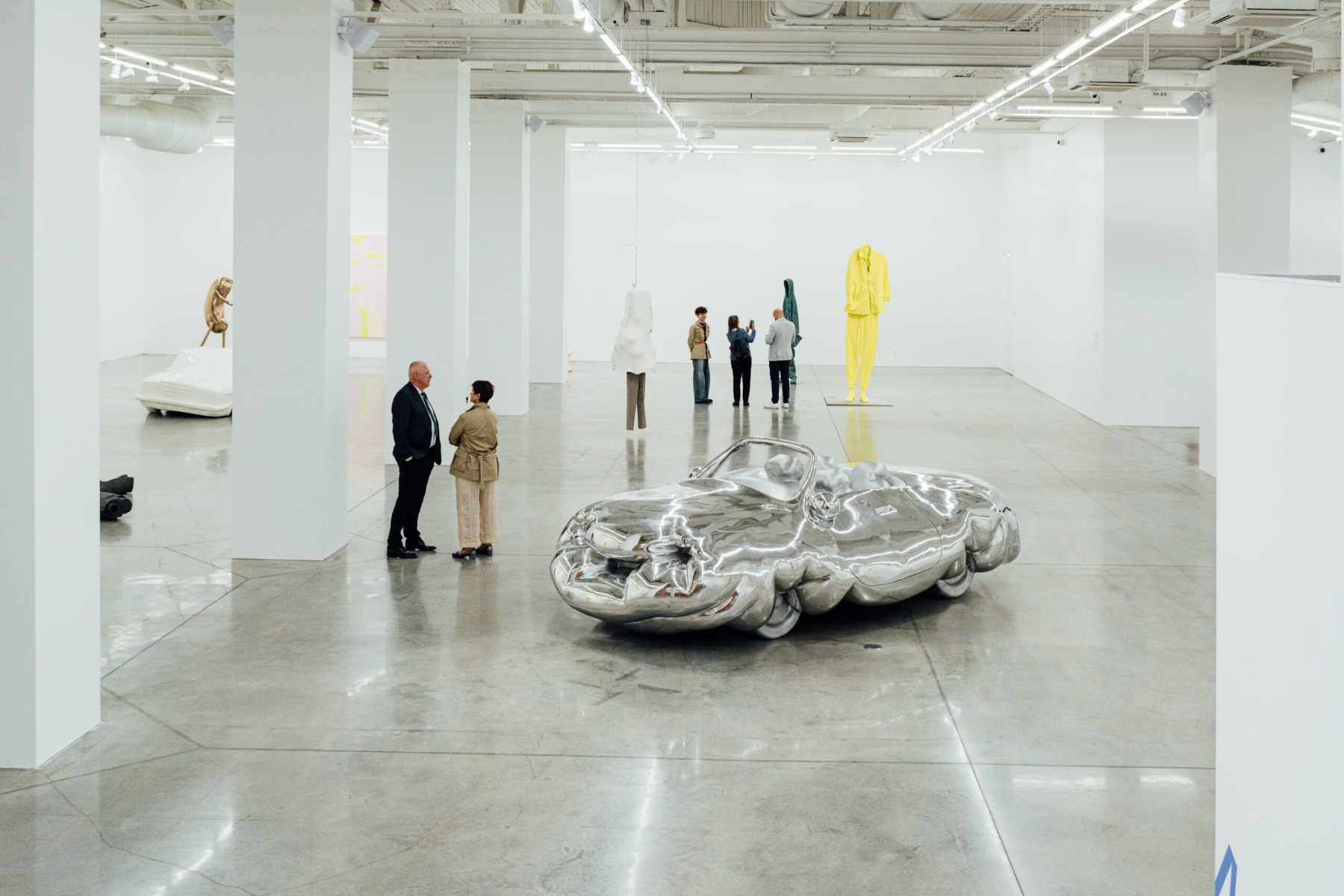
Erwin Wurm: How It Is
Until 14 September
Austrian sculptor Erwin Wurm’s first solo show in Latvia! Erwin Wurm (b. 1954, lives and works in Vienna and Limberg) is considered one of the most influential European sculptors of the last few decades. How It Is collects his works from different periods, presenting a unique perspective on the artist’s singular mix of figuration, philosophy, and the absurd.
Armed with a motto of “everything is connected to everything else”, Erwin Wurm thinks of the human body as a malleable, open-ended connector between the organic and the human-made, the perks of consumer culture and the stalemates of conspicuous consumption. The title of the show is lifted from Irish playwright and Nobel laureate Samuel Becket’s 1962 novel. The eponymous sculpture (2024), one of the more complex pieces the artist has made, belongs to the series of One Minute Sculptures that Wurm has started in late 1990s. This series offers the audience the possibility to transform themselves into a living sculpture by following the artist’s specific instructions and performing simple exercises with everyday objects. A selection of One Minute Sculptures is complemented by several photographs under the title of One Minute Photographs, showing the sculptures in the state of activation. A number of iconic images takes centre stage in the exhibition. But the most recent body of work in the show, Substitutes (2024), is a continuation of Wurm’s long standing interest in clothing as a volume that both holds the body and creates a set of meanings for its owner. The monumental scale of Substitutes, made from thin sheets of painted aluminium, presents the garments as having character in themselves, divorced from the wearer’s personality.
Kim? Contemporary Art Centre
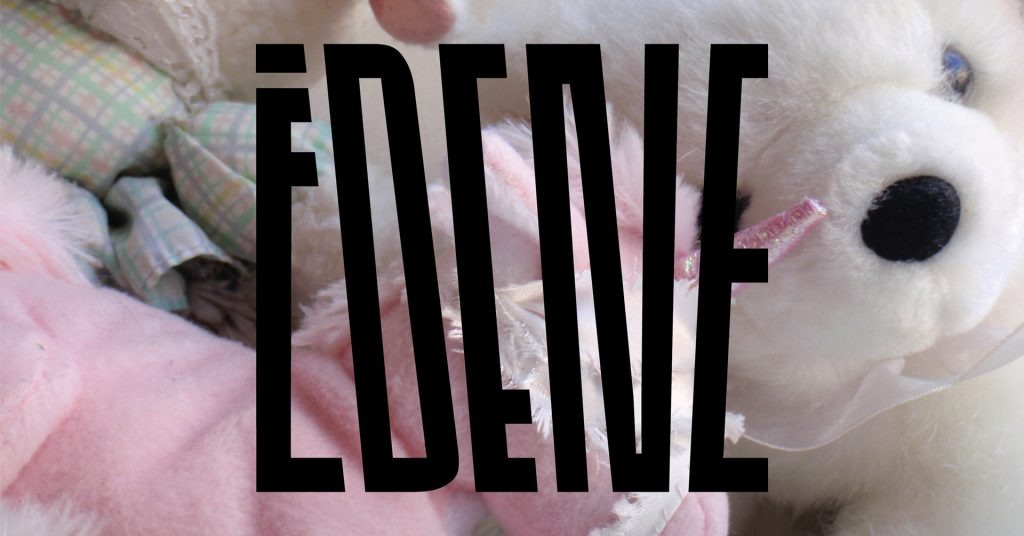
EDEN: Coming of Age. Kim? Contemporary Art Centre’s annual festival
Until 3 August
Following the inaugural festival, EDEN: New Address, in 2024, this year’s EDEN: Coming of Age returns to the same address at 22 Hanzas Street, the future site of a new, larger venue for Kim?. In this moment of transition for the institution, artists are invited to conceive temporary installations that reference the festival’s theme and are inspired by the history of the building, which once housed several schools, including the Riga Technical College of Economics, the Riga Technical College of Food Industry Mechanics and Technology, and Riga Business College. The school is often the site of regulation and professionalisation of personhood where very early on the classroom acts as a fortification of ideals.
EDEN: Coming of Age gathers together a group of international and inter-generational artists who work in a wide range of media. The festival includes both new commissions and existing work that has never been shown in Riga. The exhibition is accompanied with a rich series of public programmes, and expansive festival opening and closing events with performances, DJ sets, and live concerts.
Ola Foundation
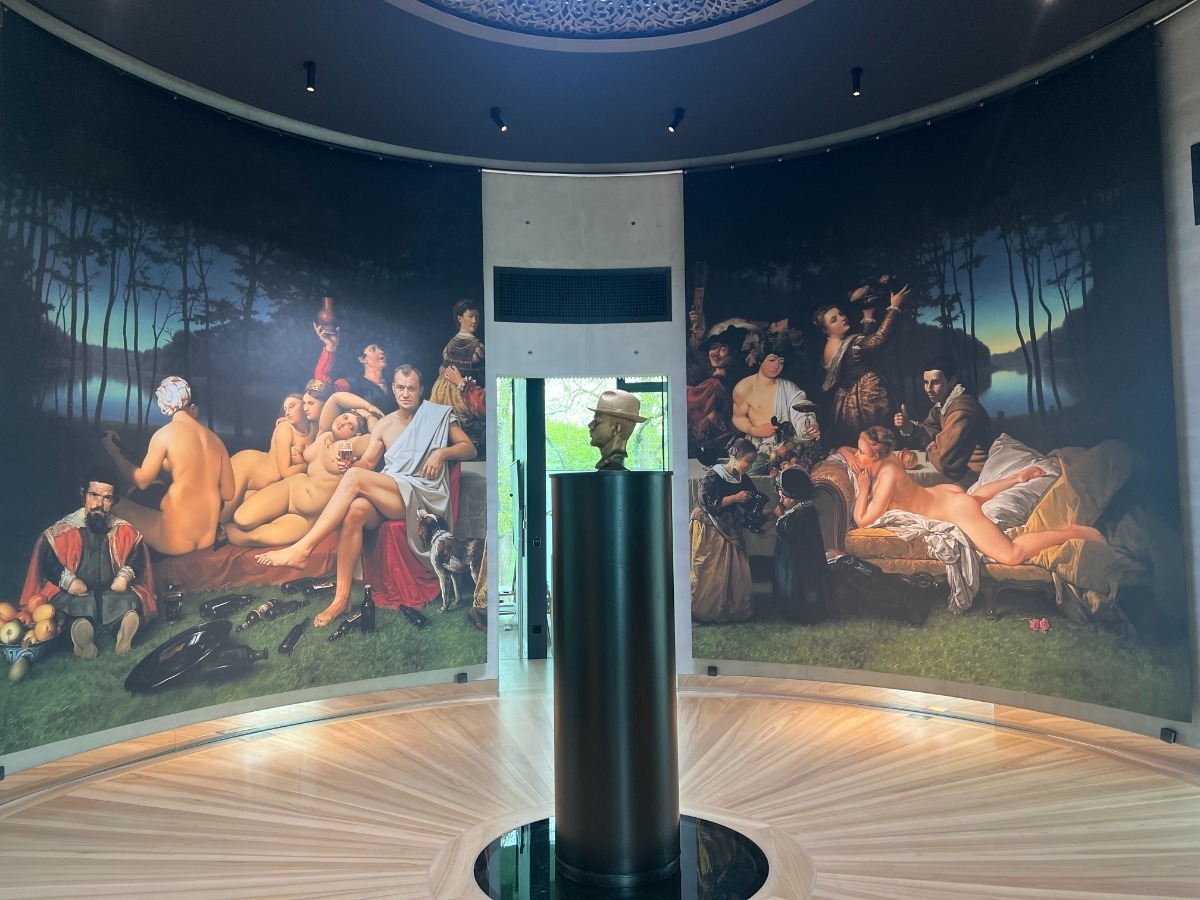
Miervaldis Polis: A Keyhole to Paradise. The Wanderings of an Egocentric
Until 1 September
“The egocentric person is an irony of human nature, not a glorification of it. It is about being ironic concerning oneself, not something else.” So says artist Miervaldis Polis – who currently lives in the countryside near Kuldīga and no longer participates in public events – during our telephone conversation. His previous life in Riga was a stark contrast to that of today, as he was one of the shining stars of the Latvian art scene up until the early 2000s. He could almost always be found sitting at a table at the M6 café, a popular haunt of artists up until its closing in 2003. Painter, performance artist and theorist – one could say that he purposefully created his life as a performance. This was the case both during his public walks as The Bronze Man, arguably his most well-known work, as well as beyond. Polis even famously appointed himself a member of the nobility and set up his own memorial room in the most prestigious art space of the time, Rīgas galerija. He loved to play pool, and is even rumoured to have been a professional casino gambler for a while.
Miervaldis Polis is undoubtedly one of the most striking and peculiar personalities in Latvian art history of the second half of the 20th century. This exhibition focuses on a particular facet of Polis' oeuvre, seeking to explore his beloved “utopian realism”, the routes of his wanderings, and the characters he encountered while there; it concentrates on his “spectacle”, as he himself terms the genre of performance. Works featured in the exhibition are from the collections of Jānis Zuzāns, Guntis Belēvičs, and Ainars Gulbis.
More info>>
Māksla XO Gallery

Bodo Korsig. Horizons of Desire
Until 16 August
is characteristic way, the artist transforms the exhibition space into parallel worlds – vivid artistic metaphors that reveal Bodo Korsig’s creative practice, exploring perception, consciousness, and the depths of human existence. Bodo Korsig is one of the leading contemporary German artists, whose creative practice spans installations, sculptural objects made of metal, felt, wood, ceramics, and paper, as well as video works, laser projections, neon pieces, scenography, painting, and large-scale woodcuts. His work explores deeply emotional and psychological themes, making states such as joy, despair, or fear directly tangible. He investigates conscious and unconscious reactions, memories, and social expectations.
Korsig’s visual language is marked by abstract forms reminiscent of neural networks or cellular structures, often paired with text fragments reflecting on existential topics such as memory, love, and mortality. He combines artistic expression with insights from neuroscience and behavioural research. His art operates at the intersection of aesthetics, science, and society – challenging, touching, and marked by great poetic and intellectual power. Bodo Korsig invites visitors to examine their own memories, explore shadows, and rediscover meaning in the suspended state of things.
Galerija ASNI
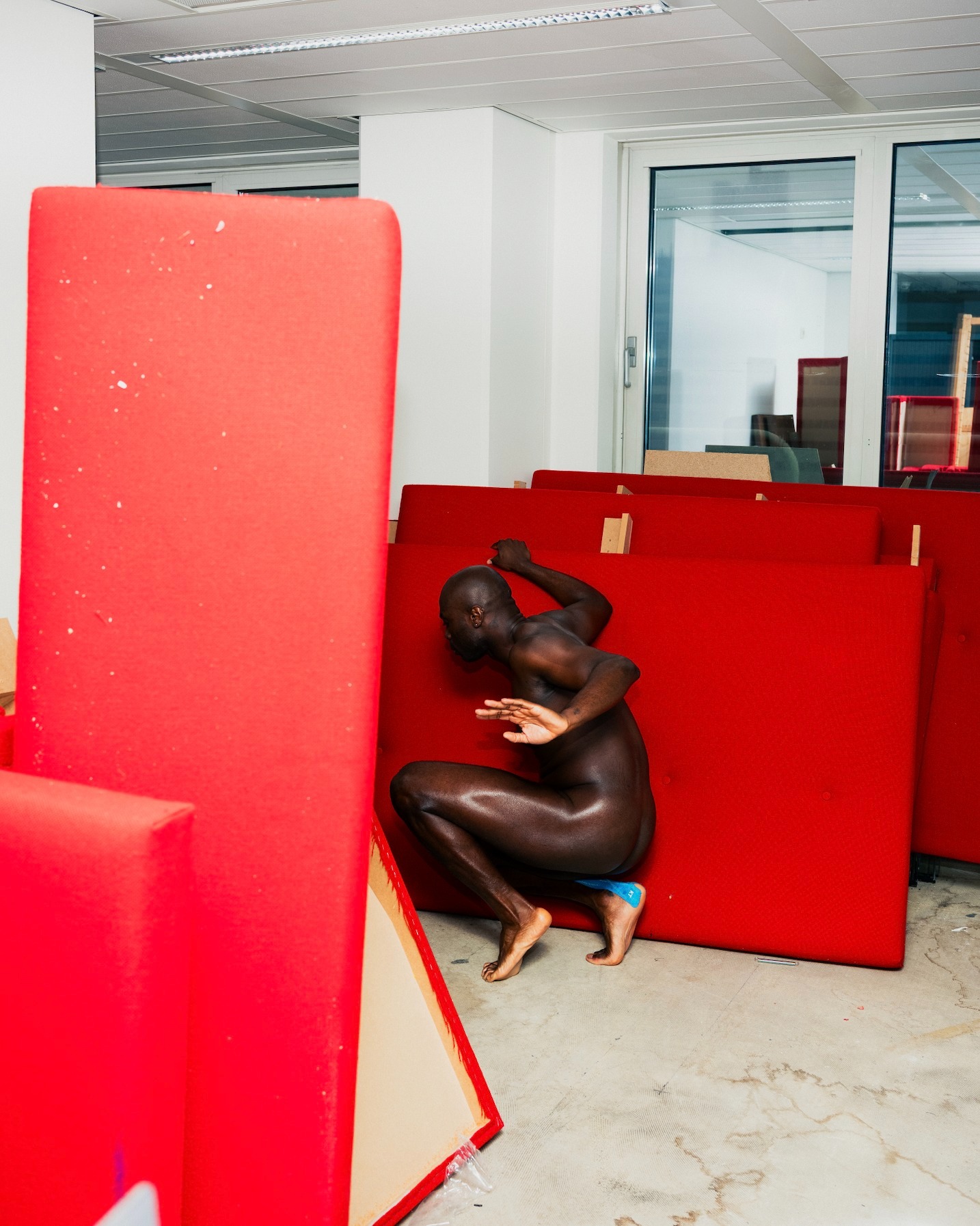
Pēteris Vīksna. This Feels Familiar
Until 2 August
In this new body of work, Vīksna explores two parallel narratives – urban and corporeal -examining their intersections, contrasts, and shared textures. The exhibition is part of the Riga Photography Biennial – NEXT 2025, which this year centres on the theme “invisible but present”. Vīksna’s contribution resonates deeply with this focus, offering a meditation on the uncanny sense of recognition—the moment when the unfamiliar becomes personal, even intimate.
This installation frames the urban environment as both an inclusive space for people and a subject of anthropological inquiry. Vīksna suggests that the trajectories shaped by human movement can shift in meaning when captured through photographic fragmentation; familiar places lose their assigned significance when the camera reveals unexpected details. In line with this conceptual approach, Pēteris Vīksna has created a new series specifically for the exhibition, exploring the theme of human corporeality. His portrayal of the nude challenges the androcentrism of traditional representations. By treating the body as an expressive actor, he investigates the boundaries of comfort and discomfort and reflects on the varied belief systems that shape our perceptions.
Riga Contemporary Art Space
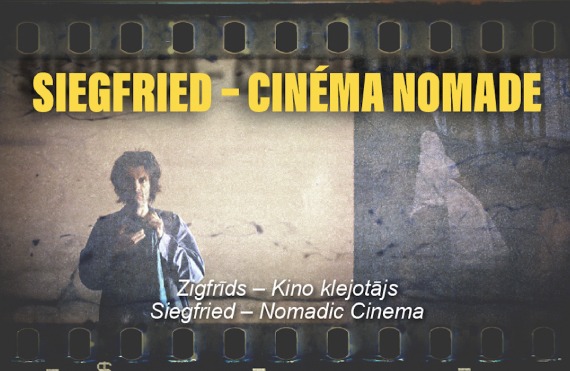
Siegfried. Nomadic Cinema
Until 28 August
The exhibition will offer an insight into the work of Sig (Siegfried Debrebant), a French composer, musician, film director and traveler of worlds. Although Sig's sudden death last autumn has radically altered the process of making this exhibition, and most likely the way we look at his oeuvre, which now is revealed in its totality, it is a full-fledged emanation of his ideas and presence. The exposition is centered around the film Kinogamma I & II, which is more than two hours long masterpiece of ecstatic world view. It is complemented by black-and-white analog photographs taken during Sig's wanderings, which can be viewed both as a supplement to his cinematic vision of the world, as travel notes, or as an artistic inquiry into the mysteries of the human dimension.
Sig's film and photo works are permeated by an undisguised, perhaps even romantic fascination with the mundane, almost invisible substance of the human existence. The image appears here as a witness and interpreter of mysteries of time and being, where Bresson's "decisive moment" merges with the Mythical time in which all the present, past and future coexist, where the evanescent and timeless are intertwined into one inextricable totality.
LMA Experimental Art Space PILOT
Fragment from Diana Luganski’s photo installation "This Whole World is Wild at Heart and Weird on Top". 2025.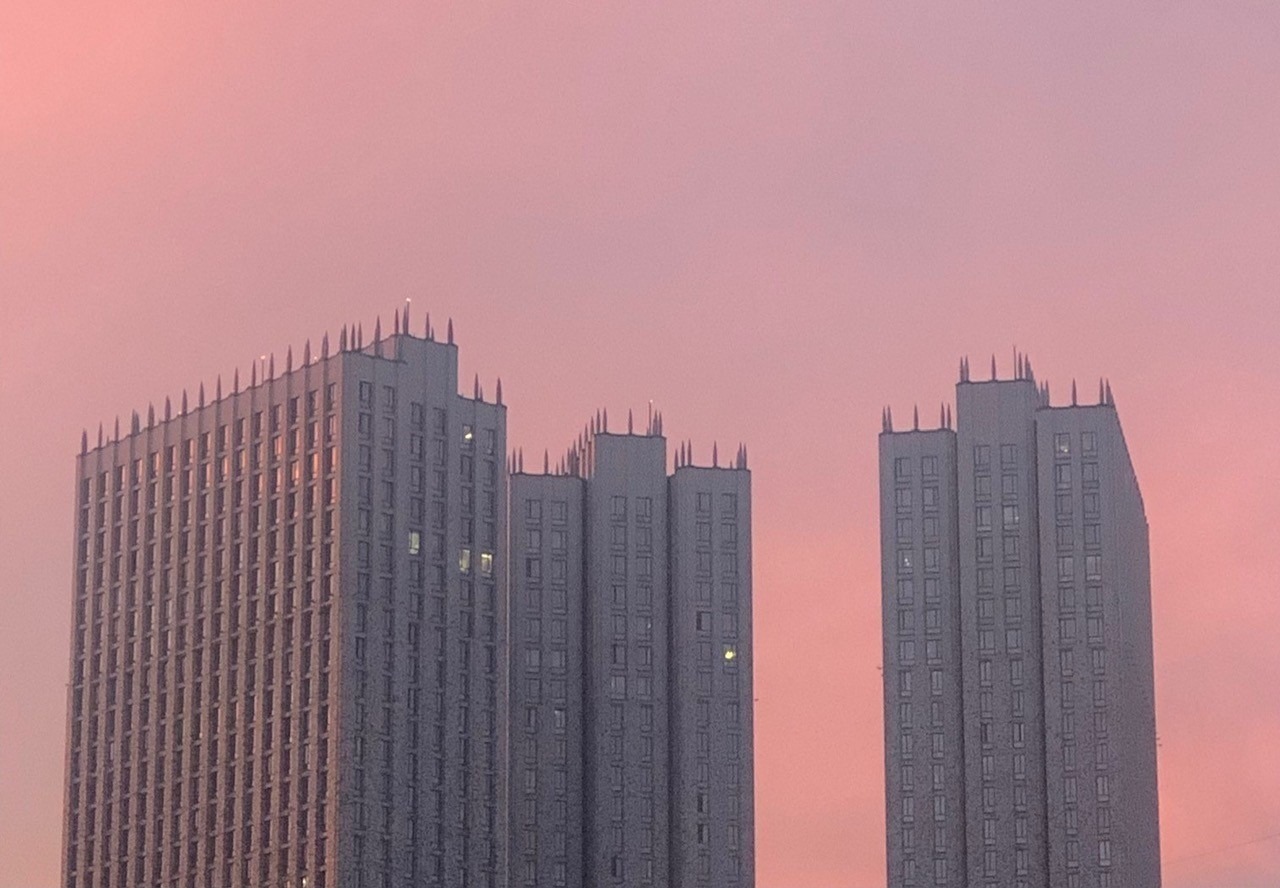
Fragments of Reality
Until 23 August
In a world where reality is constantly shifting, art becomes a way to decode the hidden layers of our existence. “Fragments of Reality” questions what is real and what is constructed, revealing that the past is not fixed but is continually rewritten. The exhibition moves across the boundaries between the visible and invisible, the material and immaterial, the past and the future, bringing together works that explore memory, identity, transformation, and perception — and reveal how contemporary artists reshape our understanding of ourselves and and the world around us.
Presented as part of the Nordic & Baltic Young Artist Award, this exhibition highlights the voices of a new generation of artists from leading academies across the region. The exhibited artists are nominees of the Nordic & Baltic Young Artist Award 2024, selected by an international jury from among 283 artworks submitted to the competition. Founded in 2016 by the Nordic Baltic Art Center NOBA (NOBA.ac), the award has become a springboard for young artists, offering them international visibility at a pivotal stage in their careers.
LATVIA, Daugavpils
Rothko Museum
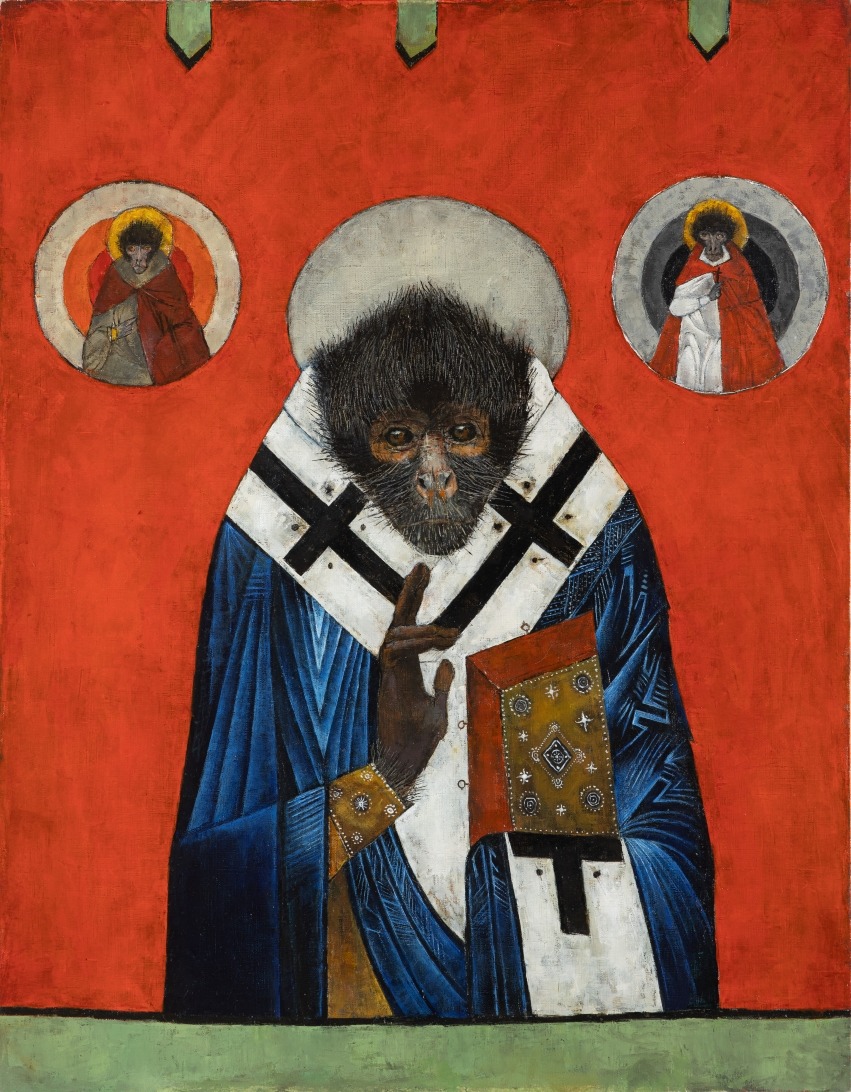
Sergey Dyomin. Painting
Until 24 August
“I tend not to dwell on things I cannot influence, on matters beyond my control, for which I bear no responsibility, to which I cannot contribute, or which I cannot change. In the vast cosmic soup in which we all simmer, we’ve been granted the rare and random privilege of experiencing life. Nothing more, nothing less. Becoming a painter, too, was a matter of chance. At some point, I discovered joy in the simple act of drawing. Later, I couldn’t imagine life without it – everything else faded into insignificance.” With these words, Dyomin offers a glimpse into the inner drive that has shaped his artistic path.
The exhibition bears the succinct title “Painting”, and that is precisely its message. It reflects the artist’s passion for what he loves and where he excels. Naturally, the pieces on display may spark reflection on Darwinism, the symbiosis of religion and power structures, the displacement of primates from their natural habitats, and their use in scientific research. One might discuss the themes of justice and truth. Yet the only enduring truth lies in self-recognition – the ability to see one’s questions, struggles, or sensitivities mirrored in places and images that resonate with the viewer’s emotions, thoughts, and experiences. Dyomin does not shy away from that recognition and observes with quiet curiosity what else the viewer will discover in his painting.
LITHUANIA, Vilnius
Contemporary Art Centre (CAC)
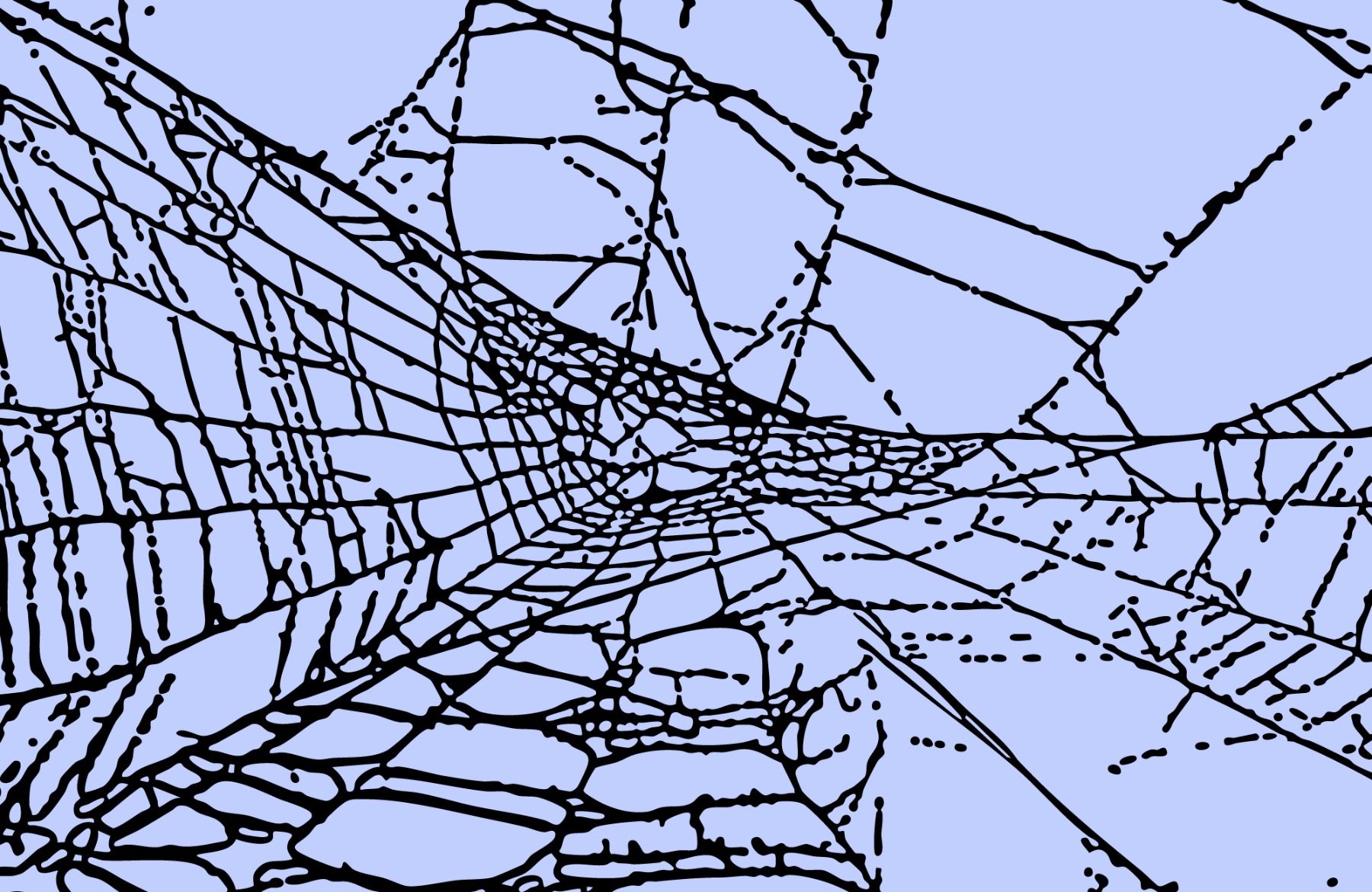
Borders are Nocturnal Animals
Until 14 September
Rooted in the geopolitical turmoil caused by Russia’s war in Ukraine, the exhibition explores the colonial histories of Lithuania and the region beyond, weaving connections into a broader international narrative. Three years after the full-scale invasion began, what forms of normality are possible in the shadow of the ongoing conflict, as we witness history repeating itself again? The exhibition highlights stories from different regions of the world and amplifies decolonial narratives long overshadowed by dominant power discourses.
The title is borrowed from Luba Jurgenson’s essay When we woke up. The Night of 24 February 2022: Invasion of Ukraine (Verdier, 2023): ‘Borders are nocturnal animals, they move while we sleep. We should always be vigilant.’ The exhibition focuses on the threat of invasion, the haunting spectres of past occupations, and the enduring systems of belief and language that carry resilience. The artists featured use imagination, poetry and ancestral wisdom as political tools, alongside more documentary approaches to navigate complex colonial histories, examine present realities, and envision possible futures.
‘Expectations’, exhibition view. Contemporary Art Centre (CAC) Vilnius, 2025. Photo: Andrej Vasilenko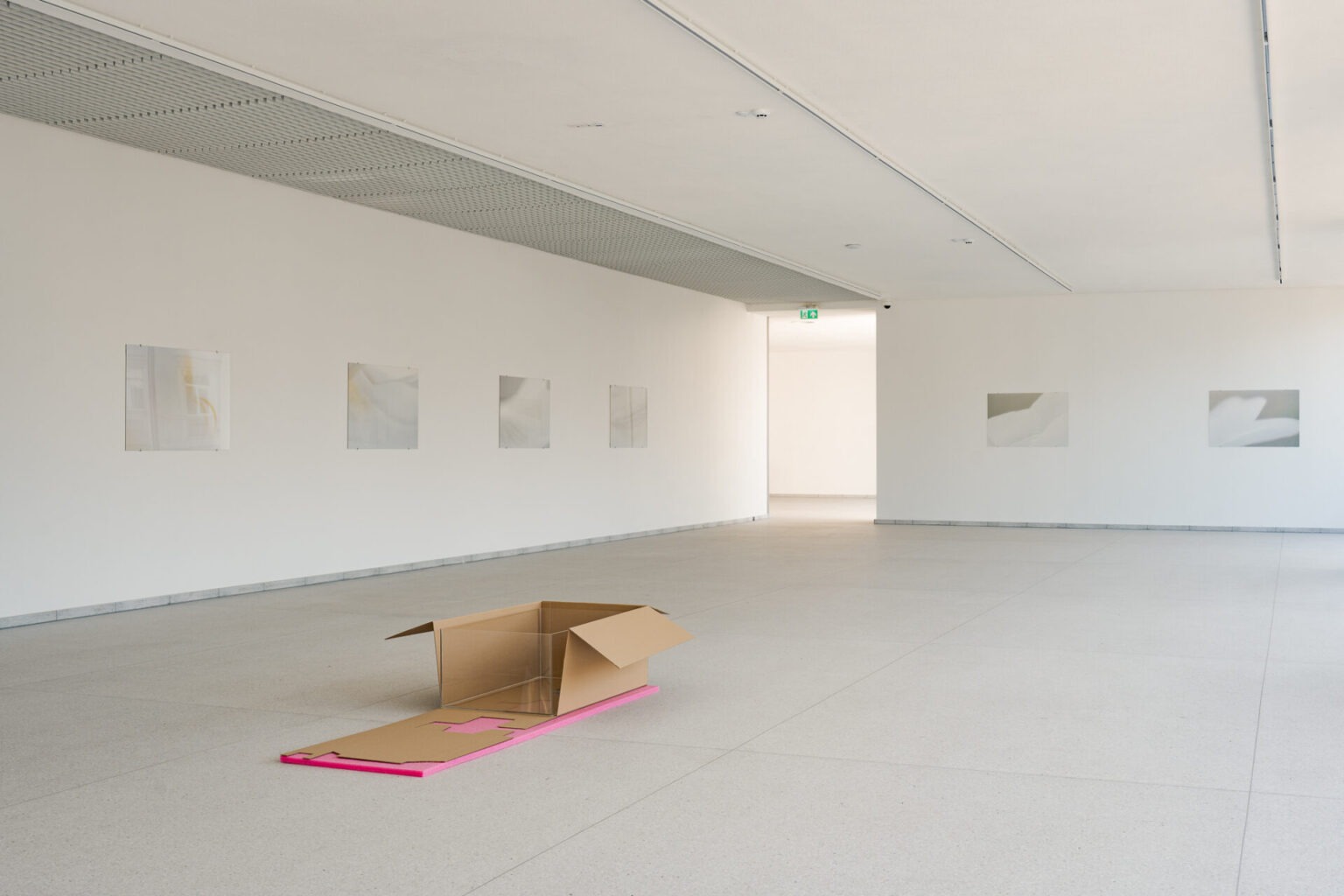
Gerda Paliušytė. Expectations
Until 14 September
Expectations is the latest chapter in Gerda Paliušytė’s ongoing project Guys and Blue Flowers, which has evolved over several years. The project comprises two photographic series – Guys (since 2021) and Blue Flowers (since 2022) – always shown together and exploring standardised systems and various forms of intimacy.
At the centre of this exhibition is a series of macro photographs of white orchid blossoms. They grew after the injection-dyed blue petals – a short-lived marketing trick used by the floral industry to entice buyers – had withered and fallen away. Large-format giclée ink prints allow for a closer look at the usually invisible textures and tonal subtleties of the white blossoms, revealing nature’s quiet resistance to colour manipulation. Almost indistinguishable from the surrounding exhibition space in daylight, these images, through their contours, invite projections of other bodies and spaces, highlighting the contingency of images and the narratives we construct from them. Did what we see really happen? Did this image ever truly exist?
MO Museum
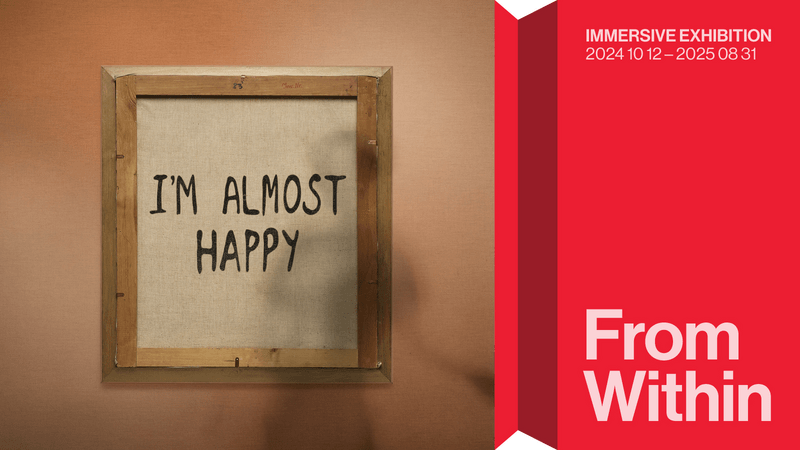
From Within
Until 31 August
An attentive and purposeful encounter with art has a positive effect on health. Works of art are multifaceted and integrate various aspects within them – which is why interacting with them has a healing power. Art speaks to us and helps develop resilience, the ability to cope with arising difficulties and act consciously. When we stand still and exist within our internal reaction to a work of art, we allow ourselves to open up to different interpretations and understand our experience in a new way, through different eyes. From Within is the first exhibition in Lithuania to combine art history and psychology on such a scale. By relying on these two disciplines, we encourage reflection on the multifaceted impact of art. The tools of art history help us understand visual language, while psychology guides us toward self-analysis. The questions that accompany this exhibition connect these two fields – like Ariadne’s thread, they help maintain a direction of looking and thinking, compelling us to open up and experience the therapeutic effect of art.
The Radvila Palace Museum of Art
Žygimantas Menčenkovas, 2024. Photo by Janina Sabaliauskaitė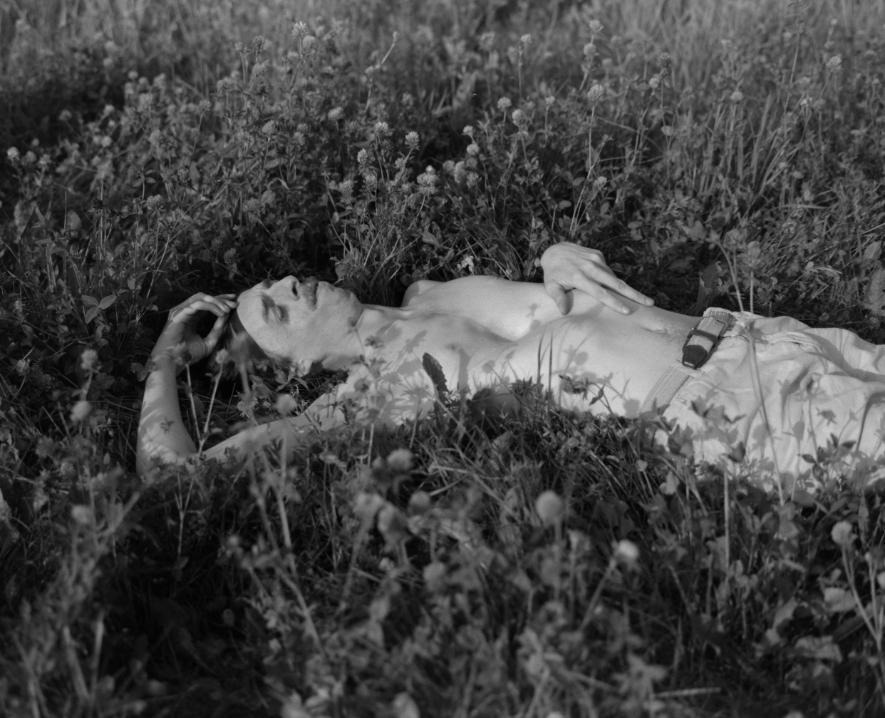
Janina Sabaliauskaitė. Pleasure
Until 28 September
Janina Sabaliauskaitė, working from Lithuania and Great Britain, subtly documents the life of LGBTQ+ community, the expression of their sexuality, joy and of communal spirit. To pursue issues of identity and gender, she dives into the themes of the erotic, of sexual education, and of disability. Her art is about intimacy and collaboration. The artist openly explores the relationships within the queer feminist society and the aesthetics of vitality.
The exhibition Pleasure, like other projects by the artist, started from conversations and attention to her models. The project records some of the most touching and powerful moments in the life of eleven participants, evocative of self-love, passion and eroticism, of attraction, potency, dreams, challenges and desires. All of these images are linked not only by the theme of sexuality. Disability – another phenomenon, often in the shadow of society life, also comes out in the prints. The exhibition underscores that life with disability, disfunction and individual needs is as diverse and unpredictable as any other, thus, in order to help these humans to live their life to the full, not depriving them of interaction, movement, sex, culture and entertainment, all these aspects of life have to be organized.
The National Museum of Lithuania
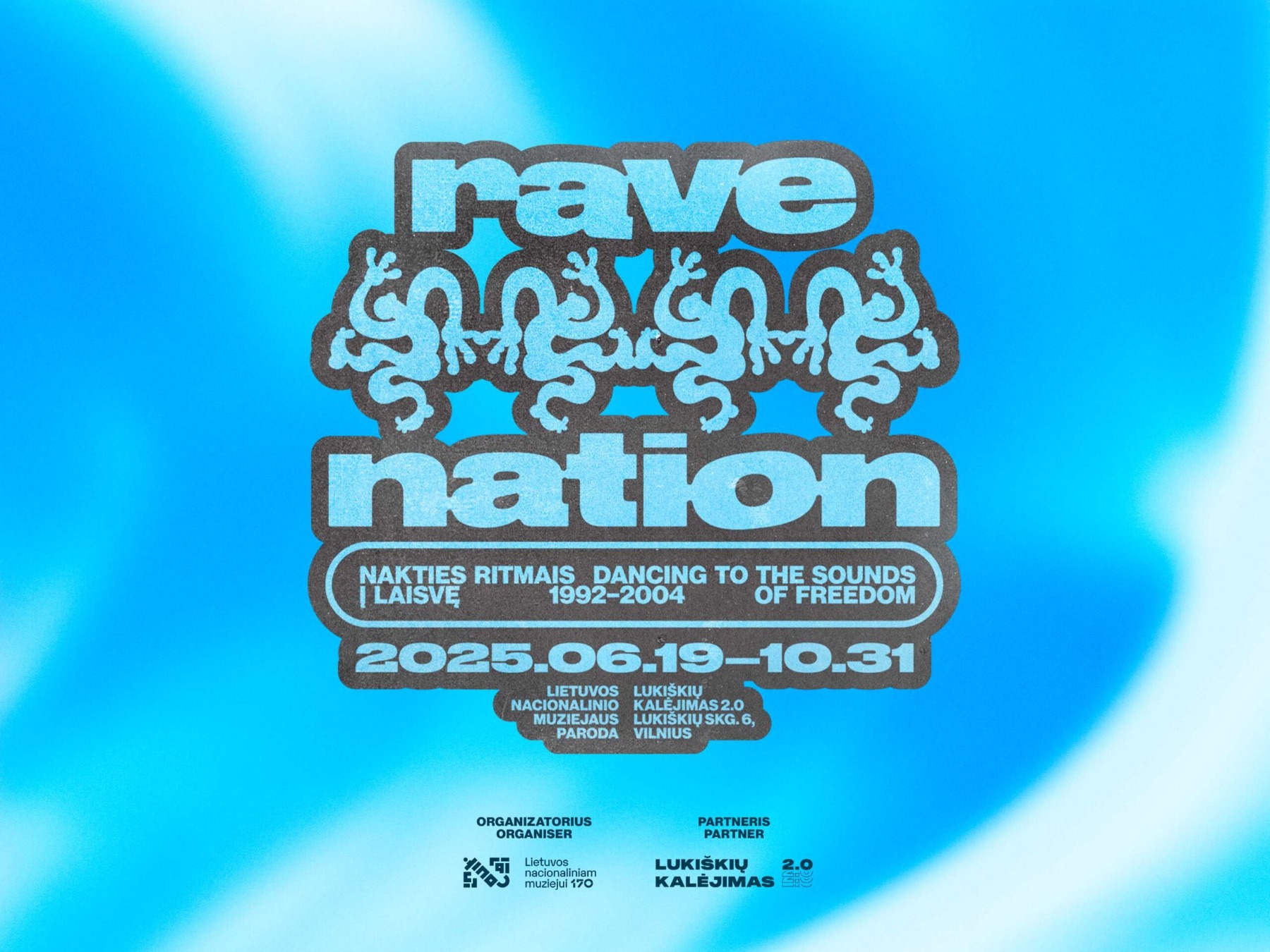
Rave Nation. Dancing to the Sounds of Freedom. 1992–2004
Until 31 October
Rave Nation is not exactly an exhibition about parties. Or rather, not merely about parties.It is, in fact, an archive and a cartography of the turning point at which rave emerged as a form of culture, a machine of resistance, escape and (trans)formation. This machine is presented in the exhibition solely through the small fragments – flyers, photographs and archival video snippets – left behind in the wake of an intense ‘battle’ on the dance floor.
The first rave-like parties in Lithuania would take place in woods, bunkers, community halls, or newly designed clubs. These raves united tribes who favoured different electronic music styles that didn’t always get along, yet these tribes all broadcasted signals into the same shared electronic music and dance space. This exhibition brings together, for the first time, the various factions, or tribes, of the ‘rave nation’: from happy hardcore to house, from Vilnius to Marijampolė, from more pop-orientated discos to parties in bomb shelters. Rave Nation unfolds in layers. At its core lies the history of Lithuanian rave from 1992 to 2004, tracing its evolution from a post-Soviet phenomenon into a Western model. Artefacts displayed in the exhibition’s galleries – flyers, photographs and other documents – chart the rise of the DJ movement, the emergence of club culture, the intersections of dance and psychoactive substances, and journeys made across cities: Klaipėda, Kaunas, Vilnius, Marijampolė, Panevėžys, and Šiauliai. The historical material is complemented by contemporary artworks, some created specially for this exhibition, others revealing rave as a field for exploring imagination, body, sound and community. Curators: Justė Kostikovaitė, Egla Mikalajūnė.
Sapieha Palace
Photo by Edith Karlson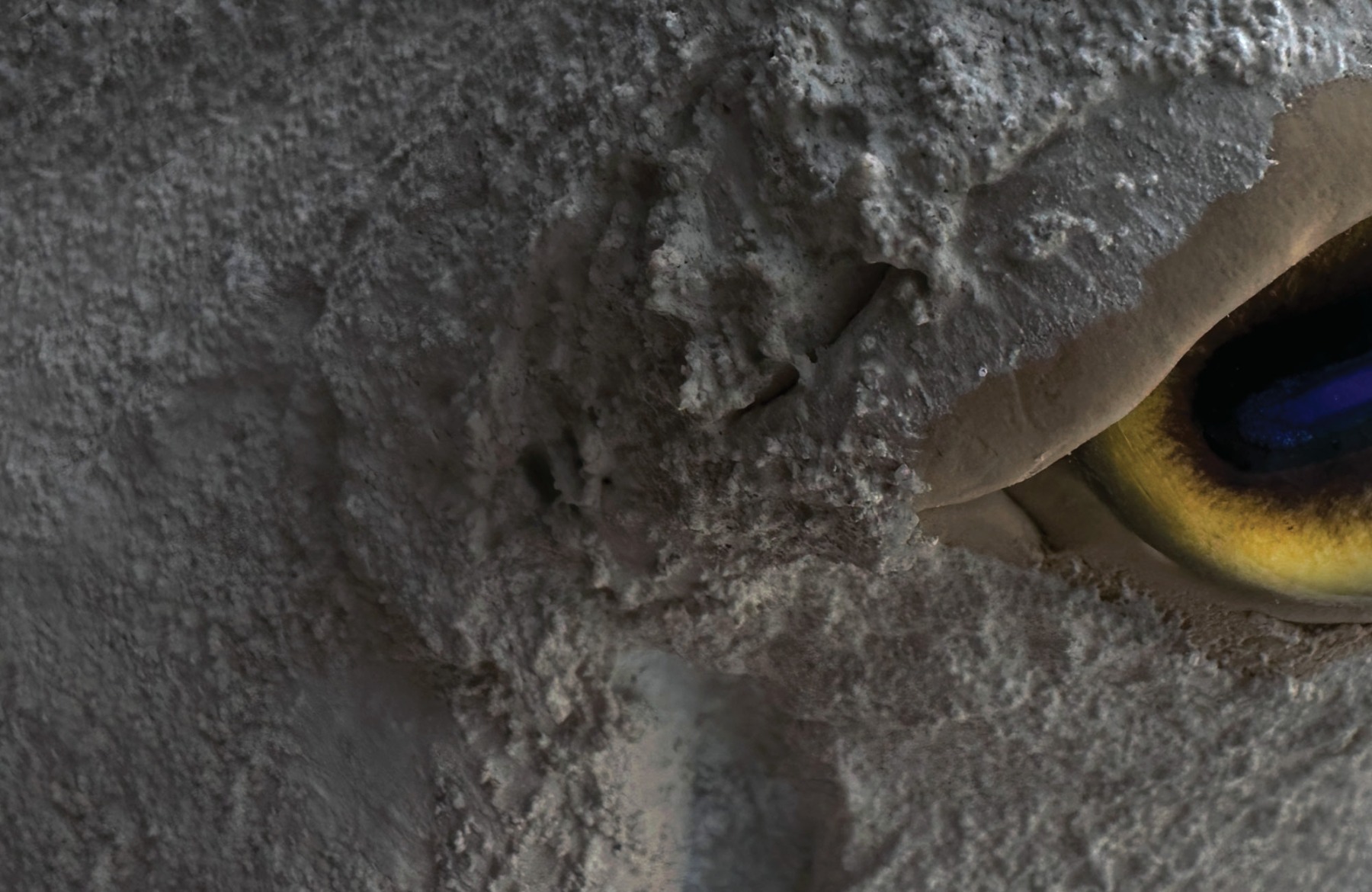
Edith Karlson. March!
Until 15 September
Edith Karlson’s exhibition “March!” is the first comprehensive solo presentation of her work in Lithuania – a new site specific installation created especially for this occasion. In Karlson’s exhibition “March!”, visitors encounter another captivating narrative of her oeuvre – an army of hybrid creatures is marching through the stunning Baroque spaces of Sapieha Palace. Rooms are taken over by ever-transforming figures who are on their way to or escaping somewhere, although the situation is unclear. The exhibition is in many ways influenced by the current state of the world – the chaos of wars and crises – where individual people find themselves in situations they have not chosen and have not consented to, yet they need to adapt to remain sane.
Adapting is one of the keywords of the exhibition. Karlson is fascinated by people’s ability to adapt – we often find ourselves in terrifying situations that we just cannot accept, however, as time passes, we see that we have indeed adapted, we move on and do things we never thought we’d be capable of. Here, adapting is seen as a survival mechanism but also as a frightening paradox that makes us accept things that go against everything, we previously held true – hearing the command “March!”, we are unexpectedly on our way in a direction we’ve been pushed to, holding weapons forced into our hands. This is not an exhibition about inevitability but of constant transformation – because who, in the end, is guiding whom and decides where we are going?
Museum of Applied Arts and Design
Stasys Ušinskas: The Iceberg of Lithuanian Modernism
Until 14 September
This retrospective exhibition, dedicated to the 120th anniversary of the artist’s birth, will showcase his paintings, stained glass works and their sketches, marionettes and their X-rays, set and costume design sketches. The exhibition will also feature rare archival footage, the puppet animation film “The Dream of the Fatty,” and a special documentary about Ušinskas’ stained glass works created for Lithuanian churches. The exhibition will be open until September 14.
Professor Stasys Ušinskas (1905–1974) was one of the most prominent Lithuanian artists of the 20th century – an exceptionally talented painter, graphic artist, stained glass and glass artist, scenographer, and art educator. Inspired by Cubism and Constructivism, he studied under Fernand Léger and the Ukrainian-Jewish scenography master Alexandra Exter, ultimately developing a unique and distinctive artistic style. Ušinskas is considered the father of contemporary Lithuanian stained glass, having perfected the technique.
Pamėnkalnio Gallery
Martynas Gailiušas. BOOM SHAKALAKA
11 July – 8 August
The exhibition title is an onomatopoeic reference to an event – a basketball slam dunk – around which multiple threads of meaning are woven. In exploring them, artist Martynas Gailiušas employs an (auto)ethnographic approach, drawing on the anthropology of political imagery and cultural analysis to examine basketball as a phenomenon with a long and complex history within both Lithuanian and global contexts. The entire cultural stratum surrounding basketball is documented in the exhibition through an exploration of more intricate, often invisible psycho-political processes – entangled knots whose unravelling reveals hidden local and global histories, threads of influence and meaning embedded within the phenomenon.
In Boom Shakalaka, Martynas Gailiušas juxtaposes repeated object scales, game lines, functional elements, and iconic signs with the broader frameworks of higher-order systems – economics and capitalism, politics and values, power, colonialism and imperialism, corporate governance, identity, the body, and biopolitics. Through these overlapping registers, the artist reveals basketball – a phenomenon of sports culture – as a synecdoche of the totality of civilizational operations.
Galerija Vartai
Liucija Pačkauskaitė.Kranto St., 2025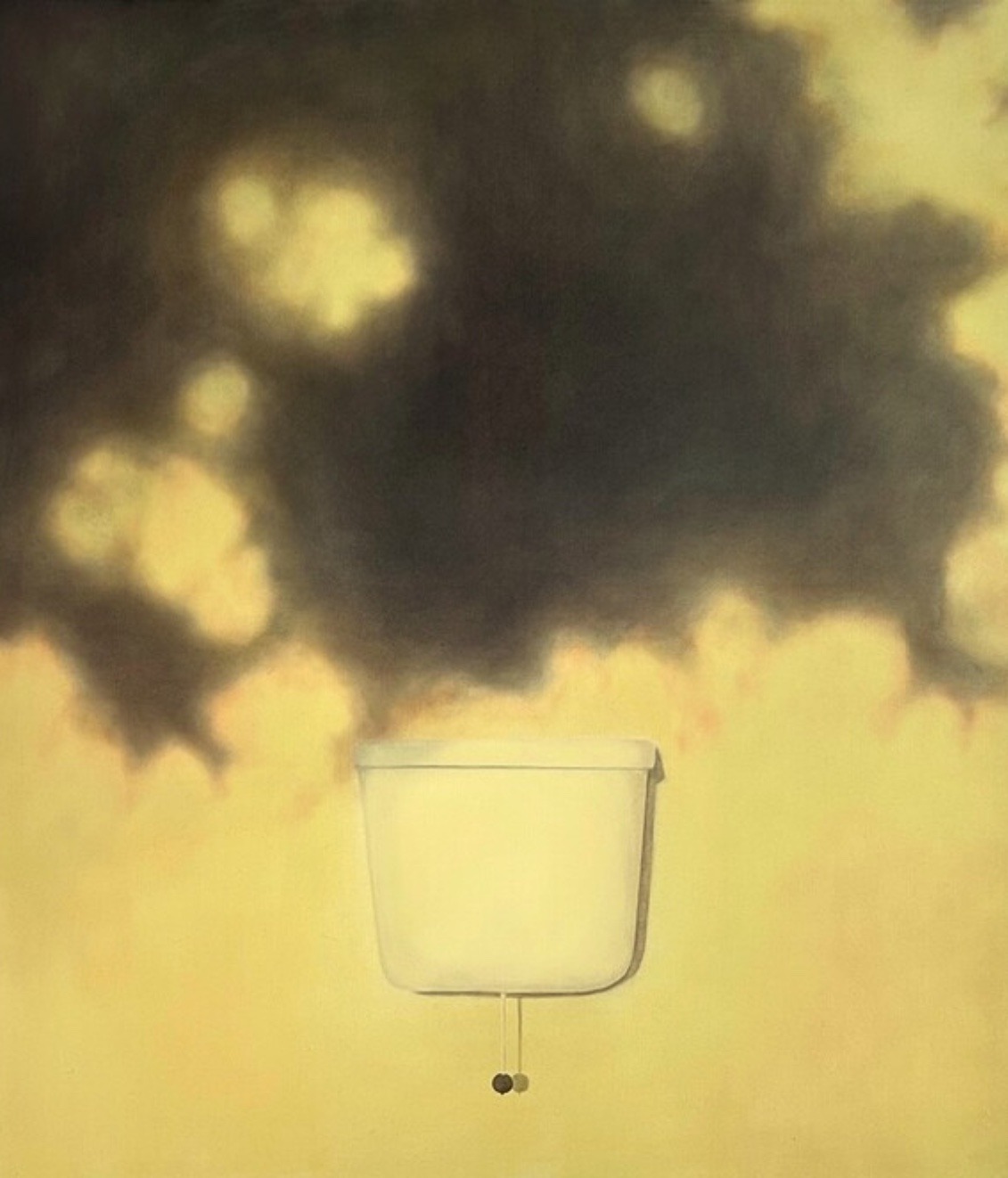
Liucija Pačkauskaitė. Sparkles
Until 31 July
In her series of paintings titled Sparkles, Liucija Pačkauskaitė contemplates how sentiments and the longing for the past change and transform memory. It is a visual narrative that captures episodes from her childhood in the countryside, drowned in the fog of nostalgia. Only this fog is different from the one that hangs over the fields on summer mornings. It does not obscure the image, but covers it with an all-encompassing sparkle. Some of the images that emerge from the past sparkle with such intensity that they can not stay in the mind alone. Then there is nothing left but to paint them. Traveling from memory to canvas, the narrow creek of the childhood backyard begins to fall in grand waterfalls, the hill of the neighbour's homestead becomes Mount Everest, and a whale's tail emerges on the surface of the village pond. The artist reflects on what catalyses this transformation of memories, what makes them sparkle and how all of that is visually translated in her work. The exhibition combines autobiography and visual poetry, where each painting is not only an image, but also a story - about what it means to remember, to cherish, to keep and, in time, to let go. Sparkles is a visual journey through fog, streams, hills and the sparkling surface of memory
LITHUANIA, Panevėžys
Stasys Museum
© Augis Narmontas
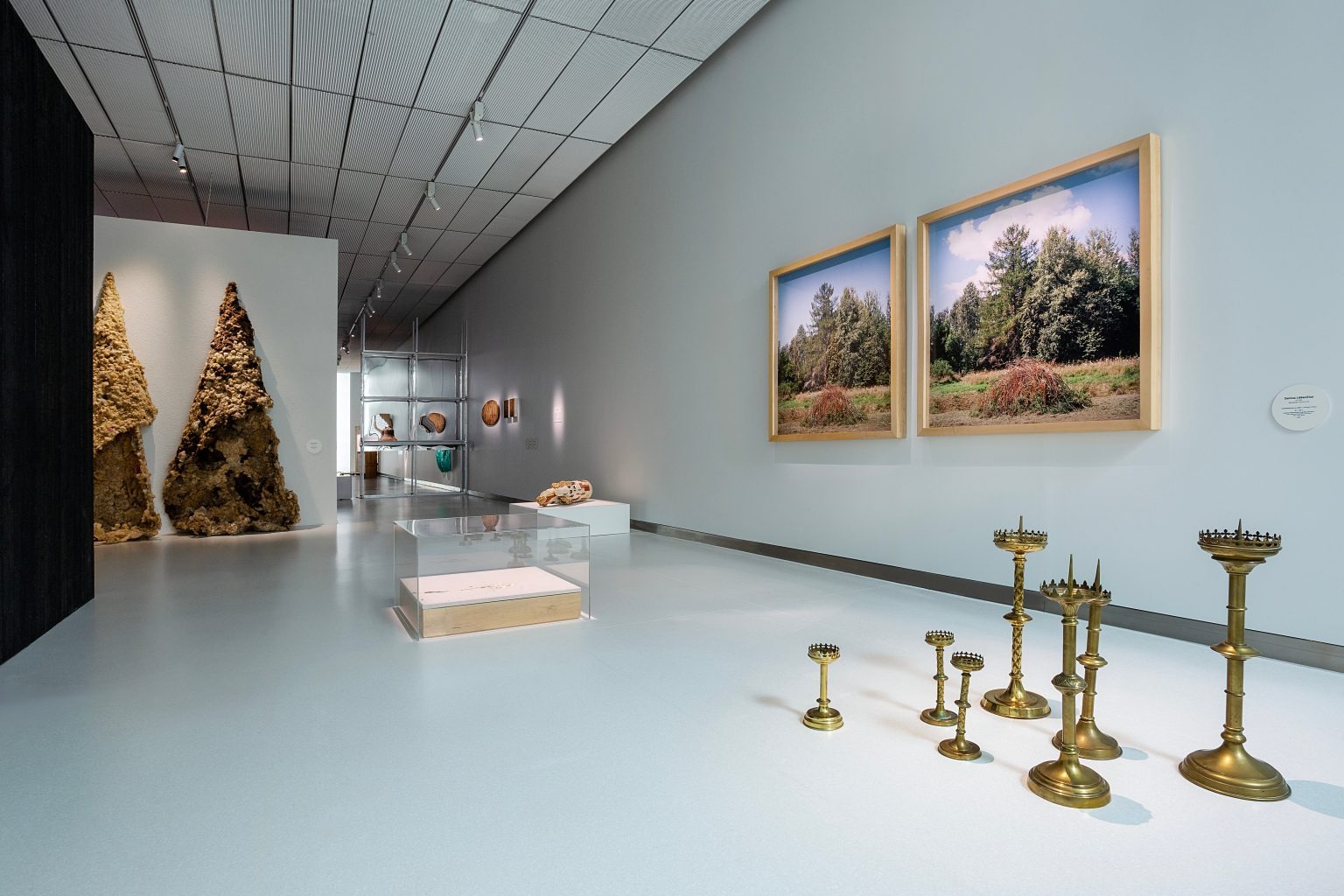
And the Wind Will Take Us Away
Until 25 August
At the Earth’s very foundation, at the core of all beginnings, lie two essential interconnected elements – soil and water. Both are significant elements reflected in the exhibition “And the Wind Will Take Us Away” which unfolds a visually and sonically immersive map, addressing urgent global issues through scientific and artistic research spanning multiple disciplines and media: installation, video, photography, painting, drawing, ceramics, sculpture, tapestry and performance.
The exhibition introduces participating artists from Estonia, Latvia, Lithuania and Norway, with a particularly emphasis on Ukrainian artists. It reflects on themes such as war, migration, the discourse of colonialism and imperialism that spans several centuries and its profound consequences for humanity; territorial security; forced migration, trauma, and historical and cultural memory; the preservation of cultural identity; ecology and climate change. The exhibition contemplates historical events that, in certain ways, are repeating themselves today.
Title image: Gerda Paliušytė, ‘Blue Flowers’, 2025. Photo: Andrej Vasilenko
